Recently, I traveled to Iceland – the land of fire and ice – and here is the third part of my travel story. If you missed the beginning, be sure to catch up on the FIRST PART and the SECOND PART.
Day 6 – Snaefellsnes “Snow-on-mountain” Peninsular
I waited for about 30 minutes at Bus Stop #5 in the dark, freezing temperature of -6°C, with a strong wind blowing from the northeast.
At 8:20 a.m., a minibus finally arrived to pick me up and take me to their terminal, where I regrouped with other tour participants. The tour that day was on a minibus with 17 people, heading to Snæfellsnes, which means “snow-mountain-peninsula”.
I had learned my lesson. Hence, that day I was more than prepared, arming myself against the brutal weather with five layers on top, including a hooded, water-resistant thick winter jacket, and an extra pashmina shawl to cover my face.
For lower limbs, I wore three layers of pants: UltraWarm HeatTech base, a pair of jeans, and wind/rain cover pants, ensuring no cold breeze could reach my skin. Completed with two layers of thick socks and waterproof boots.
As fat as it can be and almost everyone was dressing massively, no big deal then!
Our guide that day, was a friendly half-American, half-Icelander. Besides being a part-time local guide, he is a full-time math teacher, and also our bus driver!
It took about 1 hour and 30 minutes to reach our first stop for a toilet break and to stock up on snacks.
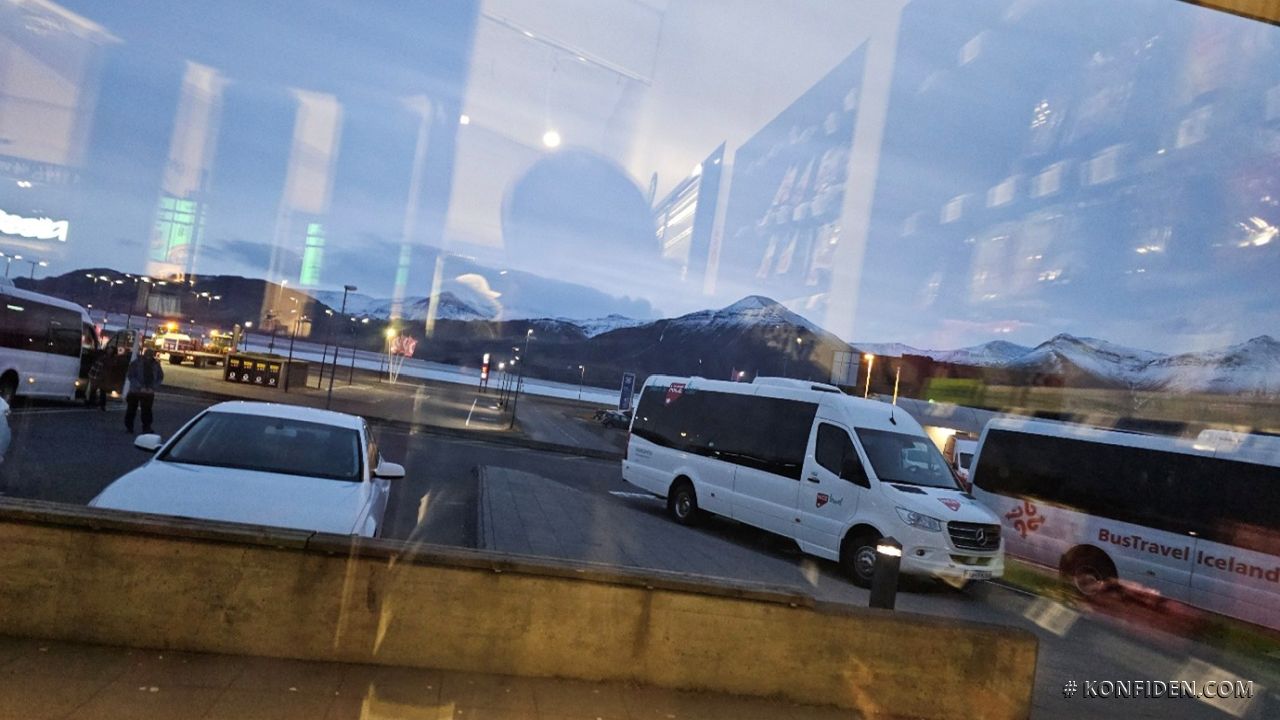
The first stop, R&R with mountains view.
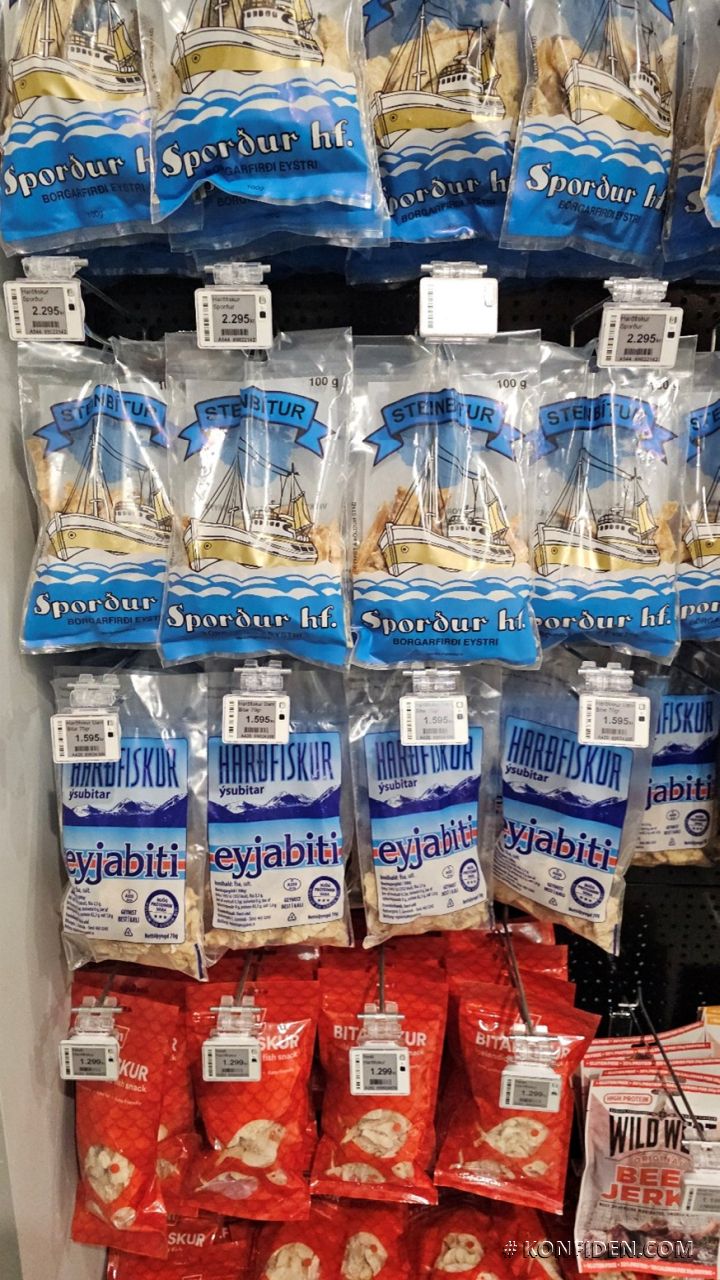
Local product (Macam di Lumut tapi lagi mahal!)
According to the Icelandic weather forecast, the day at Snæfellsnes was supposed to be bright and sunny. But Allah knows best – the sun stayed hidden until 2 p.m.
There are many fascinating places in Snæfellsnes, but the tour likely selected the six best locations for us to visit and explore during the one-day trip. Some of these spots were within Snæfellsjökull National Park, the only national park in Iceland that extends from the seashore to a glacier-capped volcano.
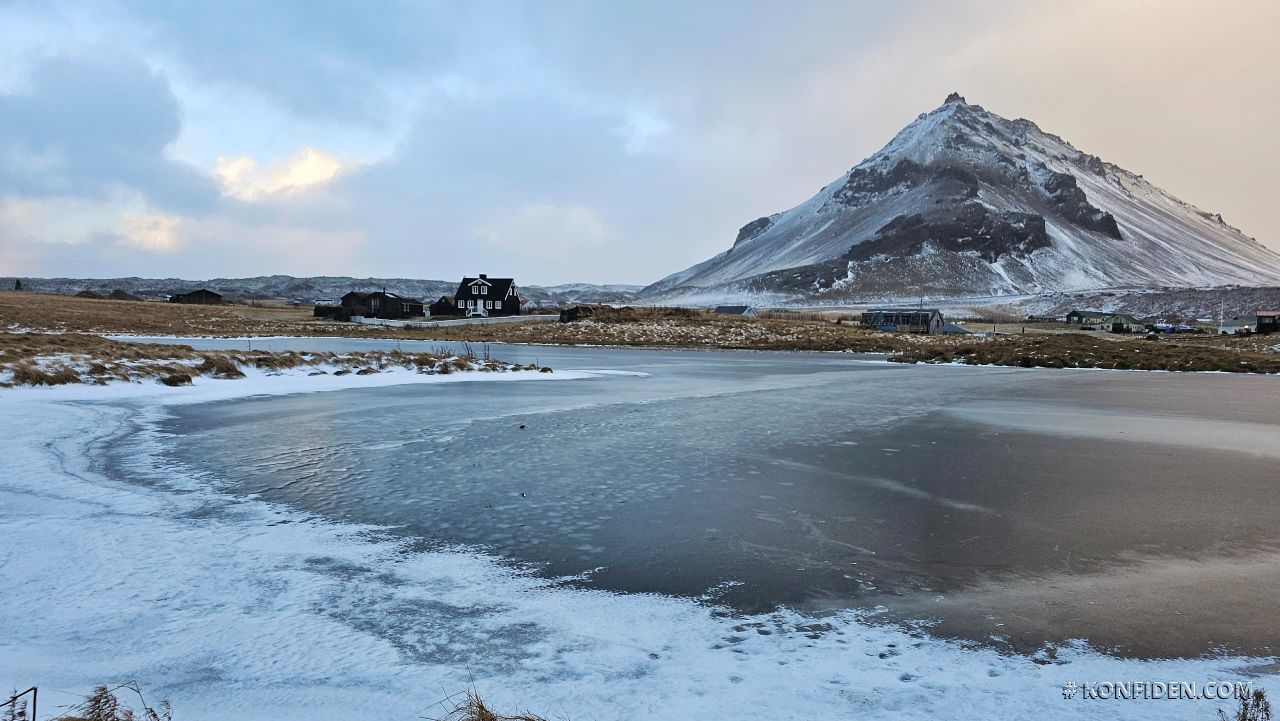
One of the stops was Arnarstapi, a small fishing village at the foot of Mt Stapafell.
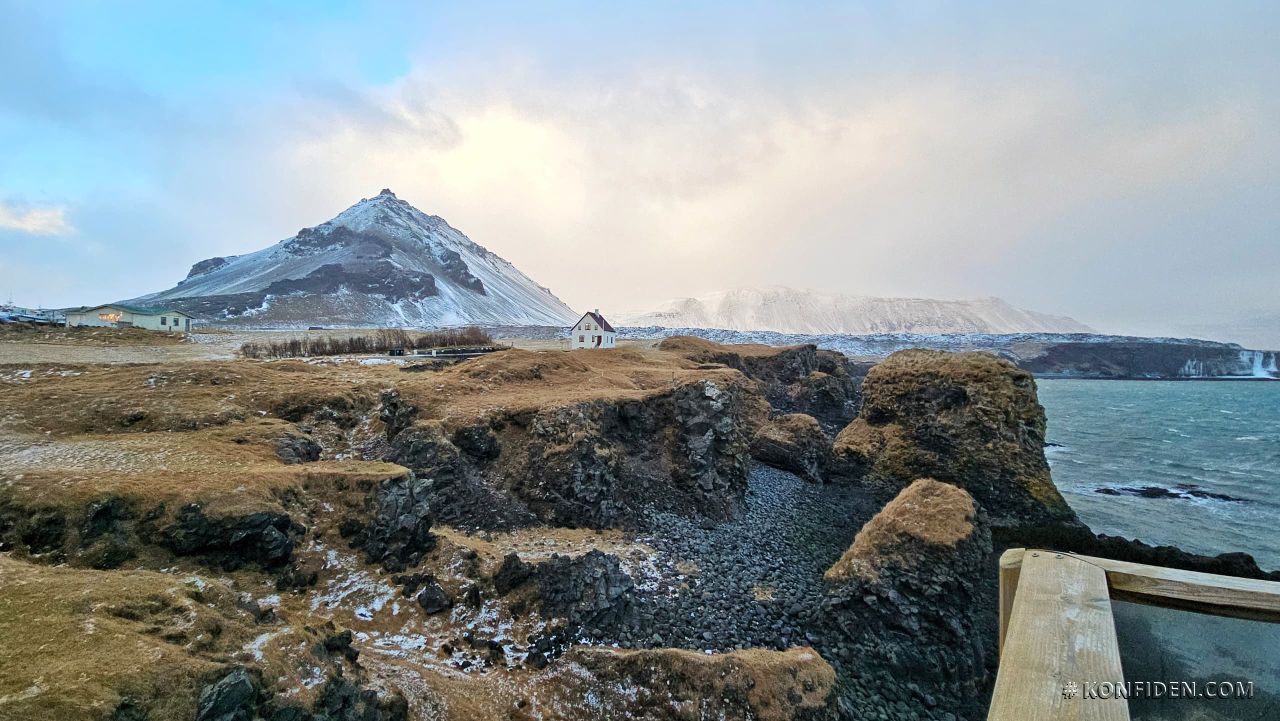
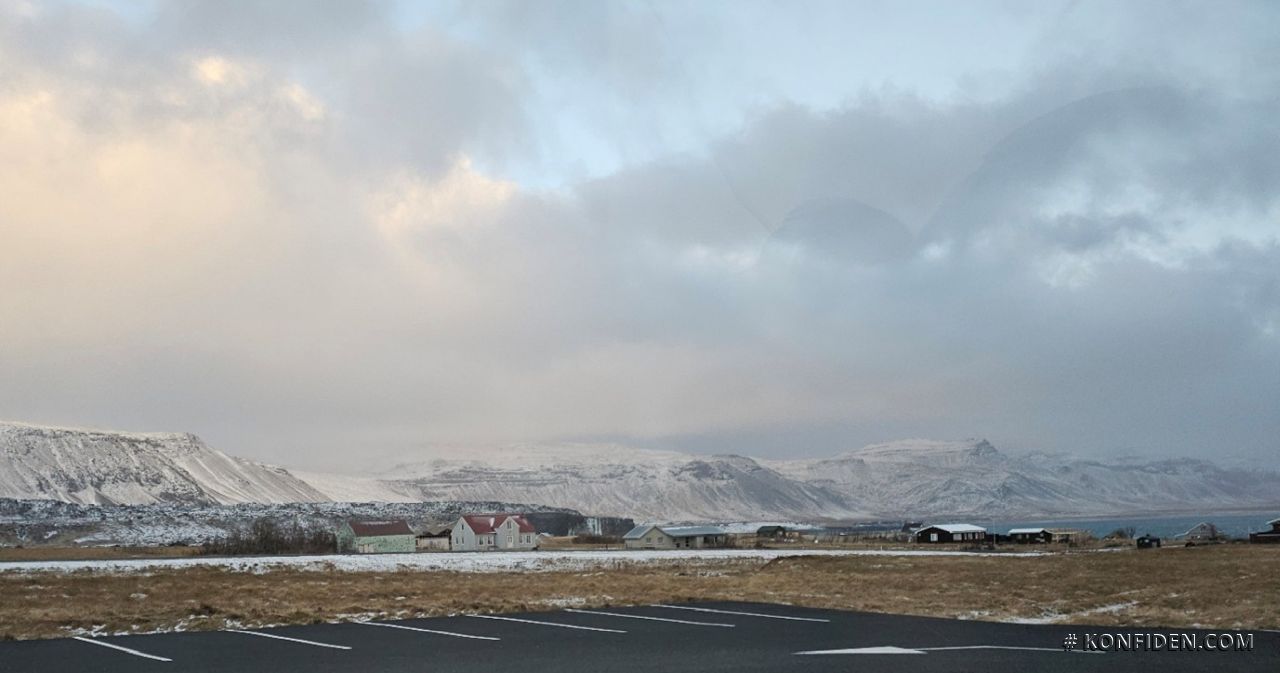
The charming fishing village, looking like the New Asgard.
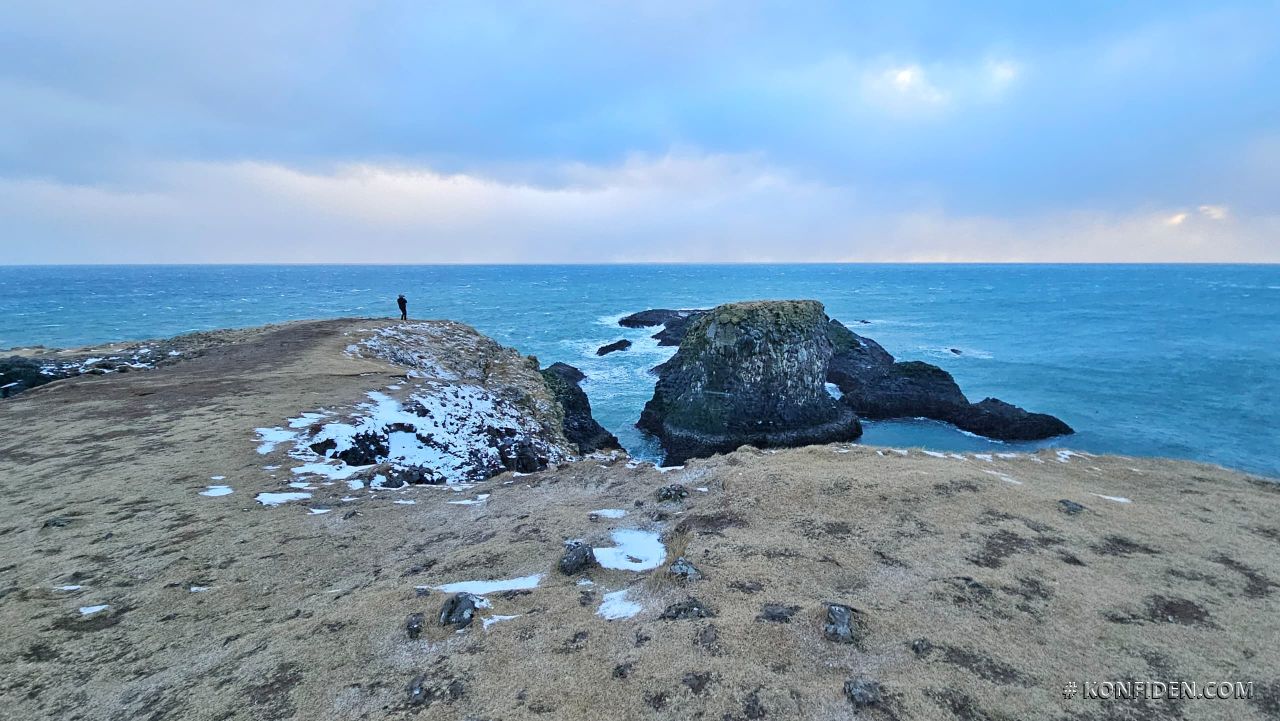
The coastal walkway in Arnarstapi was stunning, but the ocean breeze was unusually strong that day. Everyone seemed to be battling against the violent freezing wind.
I didn’t dare walk too close to the cliff, fearing the wind might sweep me straight into the ocean.
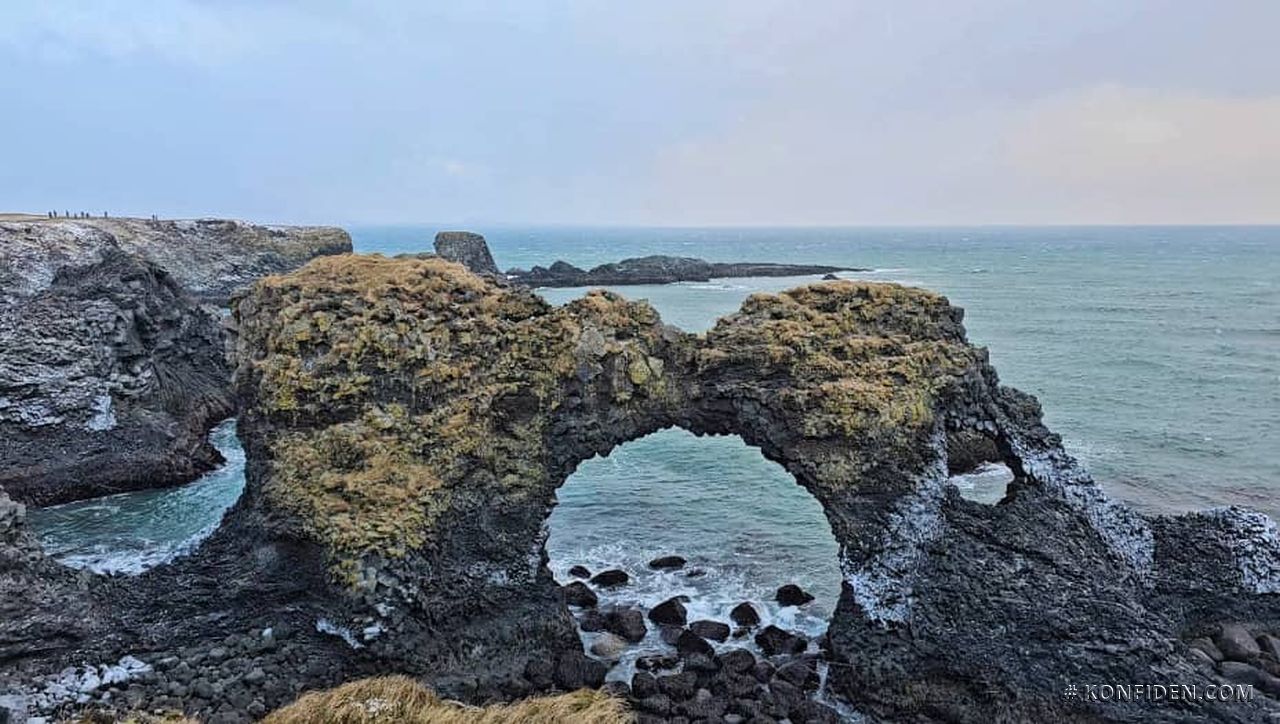
Gatklettur, a spectacular basalt rock formation with a natural arch carved out by the ocean’s relentless waves over time.
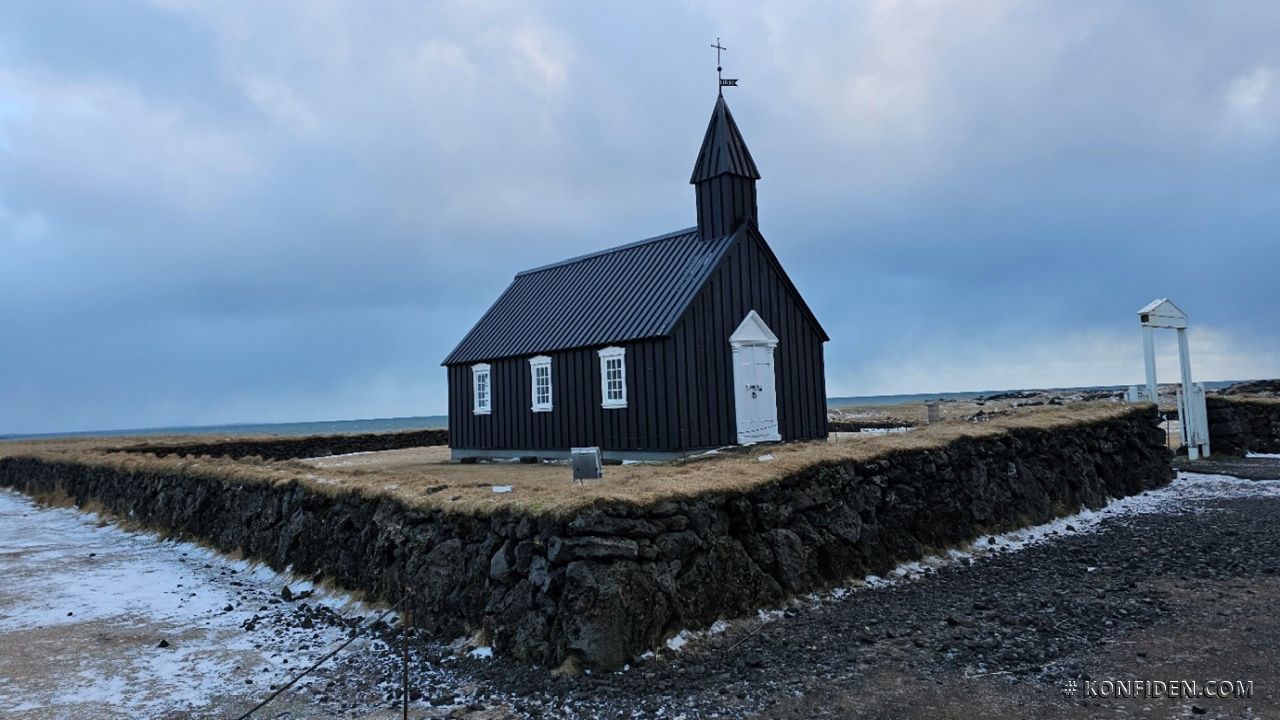
Búðakirkja, a historic black wooden church set against lava fields and mountains.
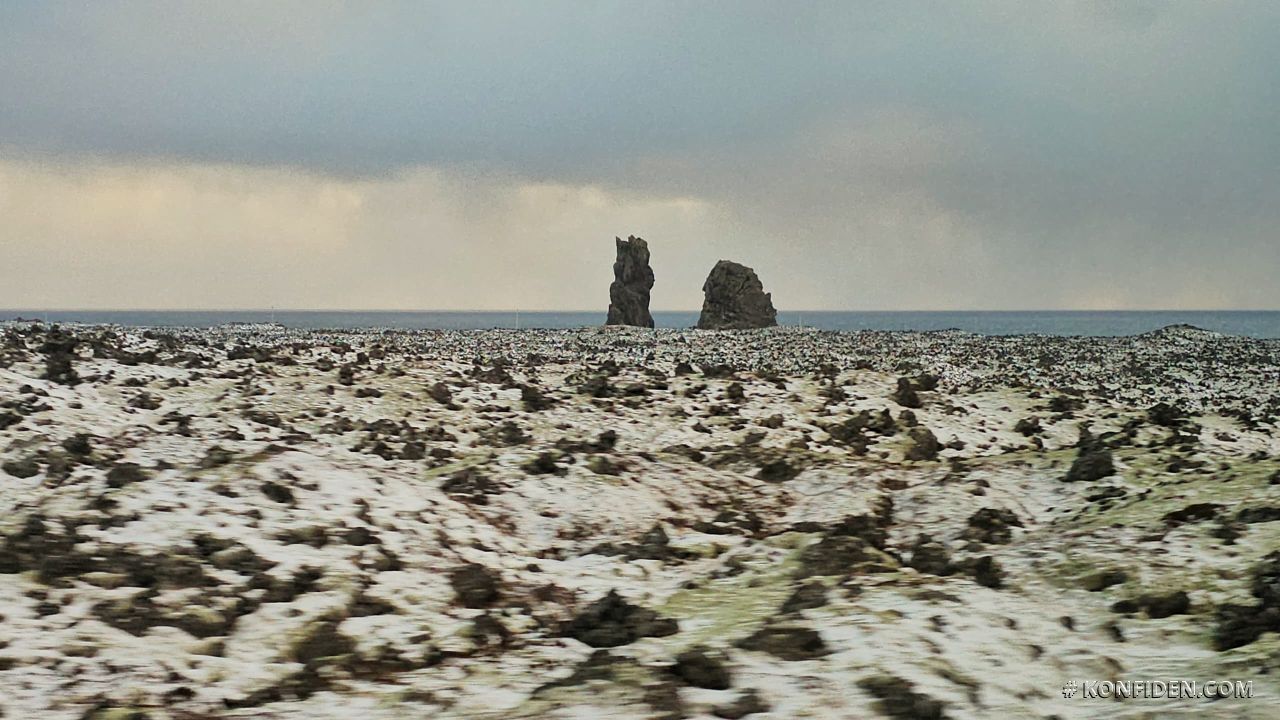
Lóndrangar, two striking basalt pinnacles that rise from the surrounding ancient lava fields within Snæfellsjökull National Park. These pinnacles are remnants of an ancient volcanic crater that has been eroded over time by the forces of nature.
One of popular Icelandic folklore claims that these pinnacles are actually trolls who were caught by the rising sun while they were out at sea. (Geng si Tanggang).
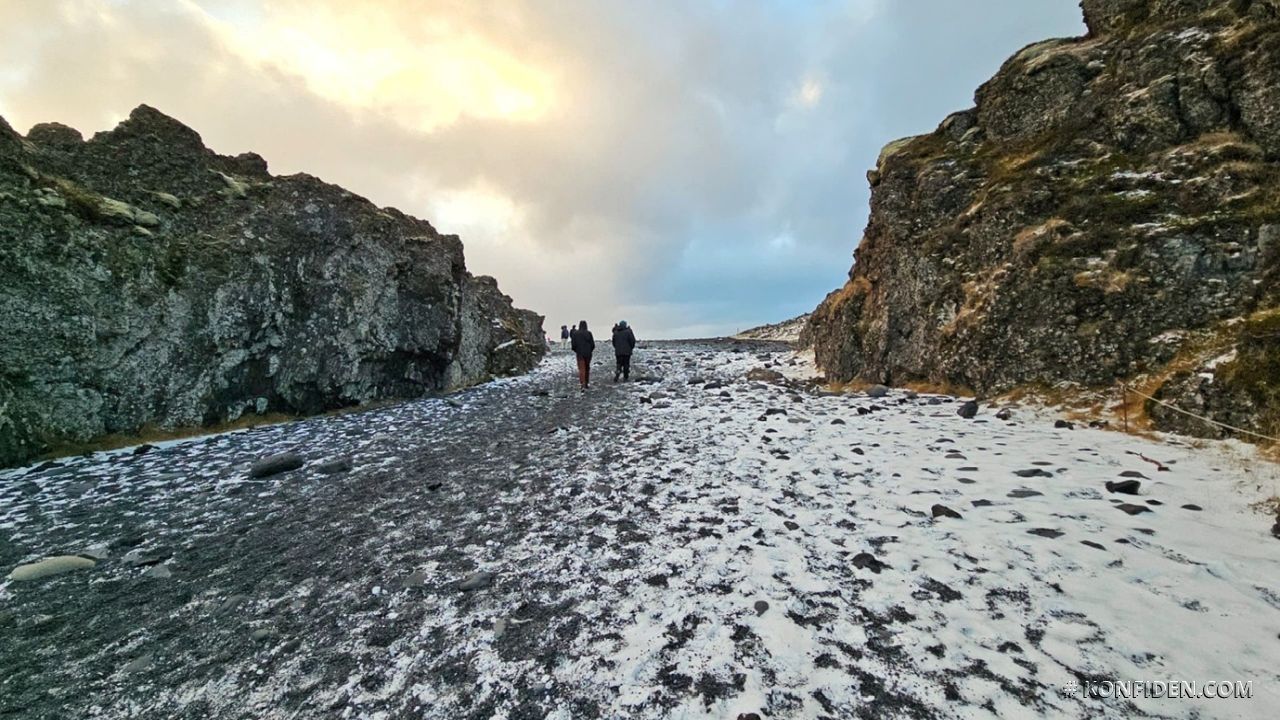
Djúpalónssandur Beach, a black pebble beach with unique rock formations. The sun finally began to make an appearance while we were there.
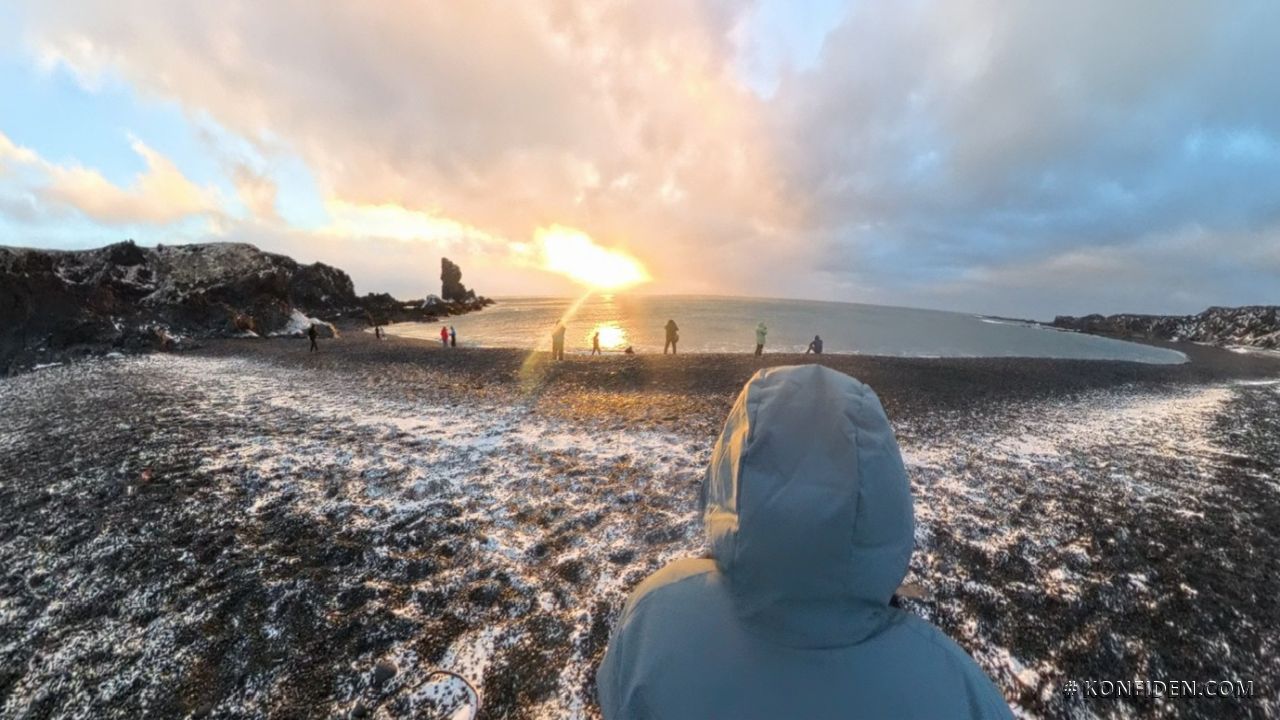
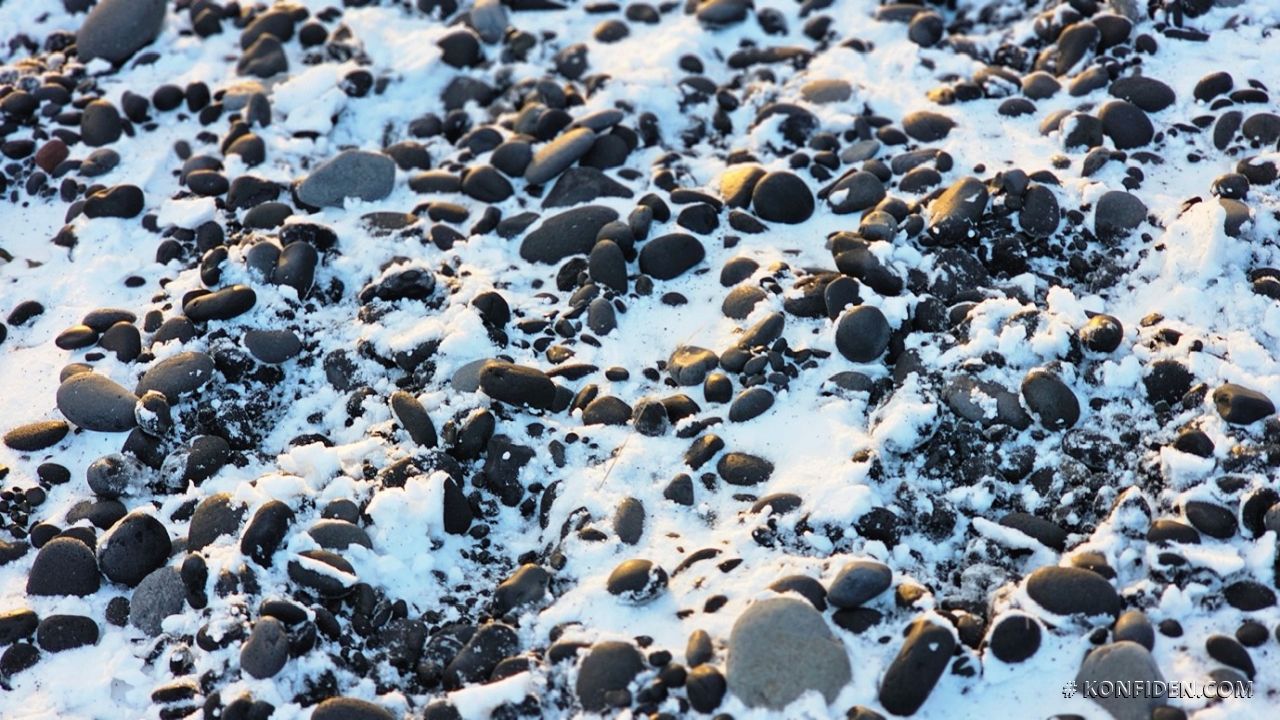
The striking contrast between the white snow and the smooth, black pebbles known as “Djúpalónsperlur,” or “pearls of Djúpalón”.
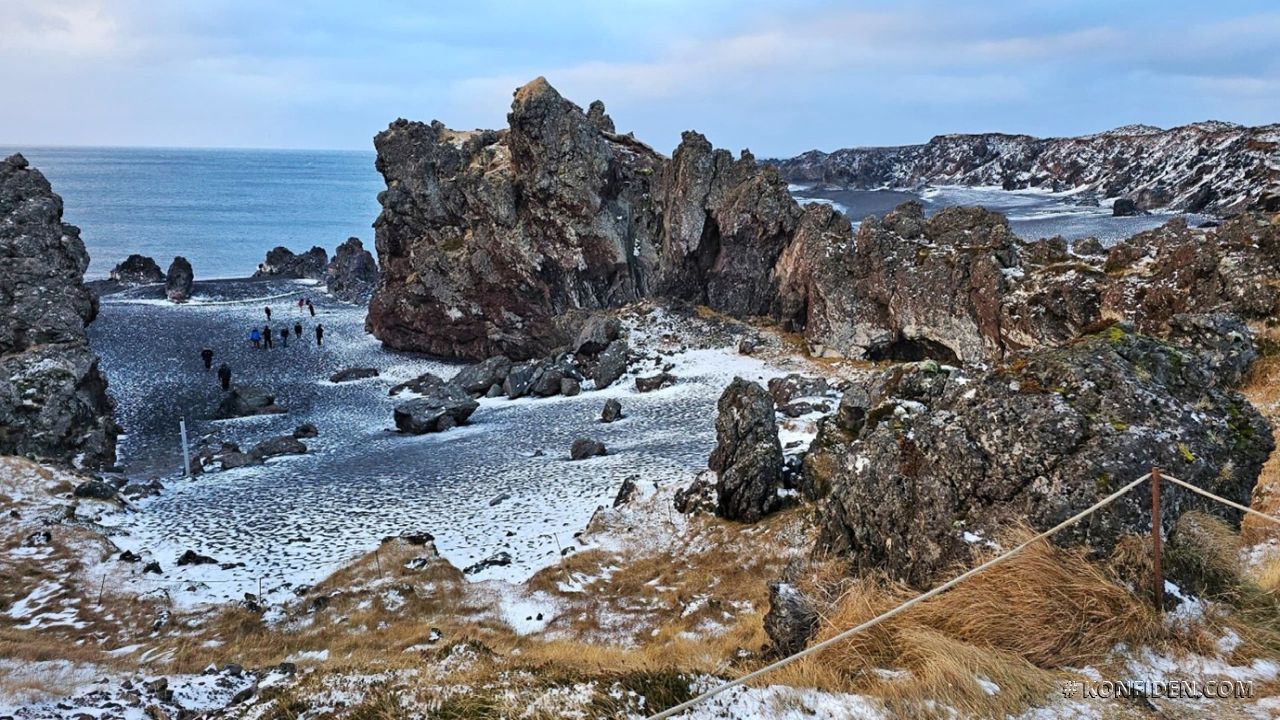
The beach also features fascinating volcanic rock formations, including Gatklettur, a natural rock arch, and other ragged cliffs shaped by centuries of erosion, surrounded by lava field.
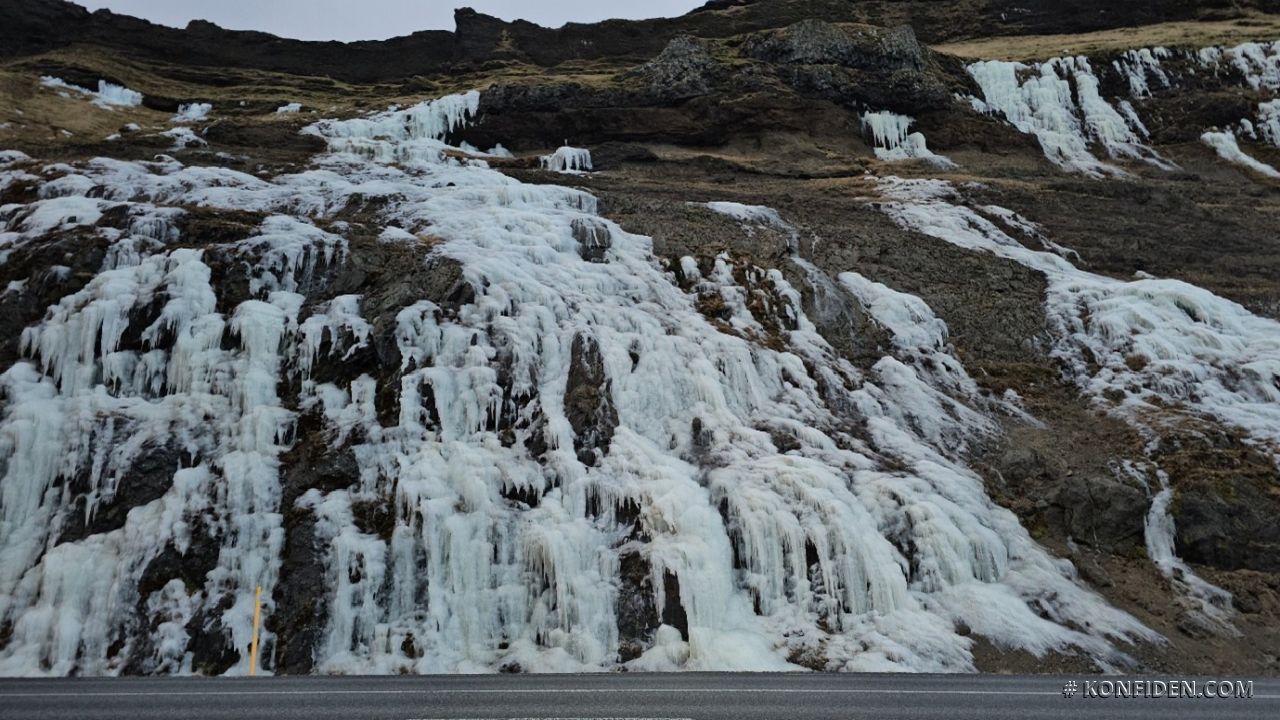
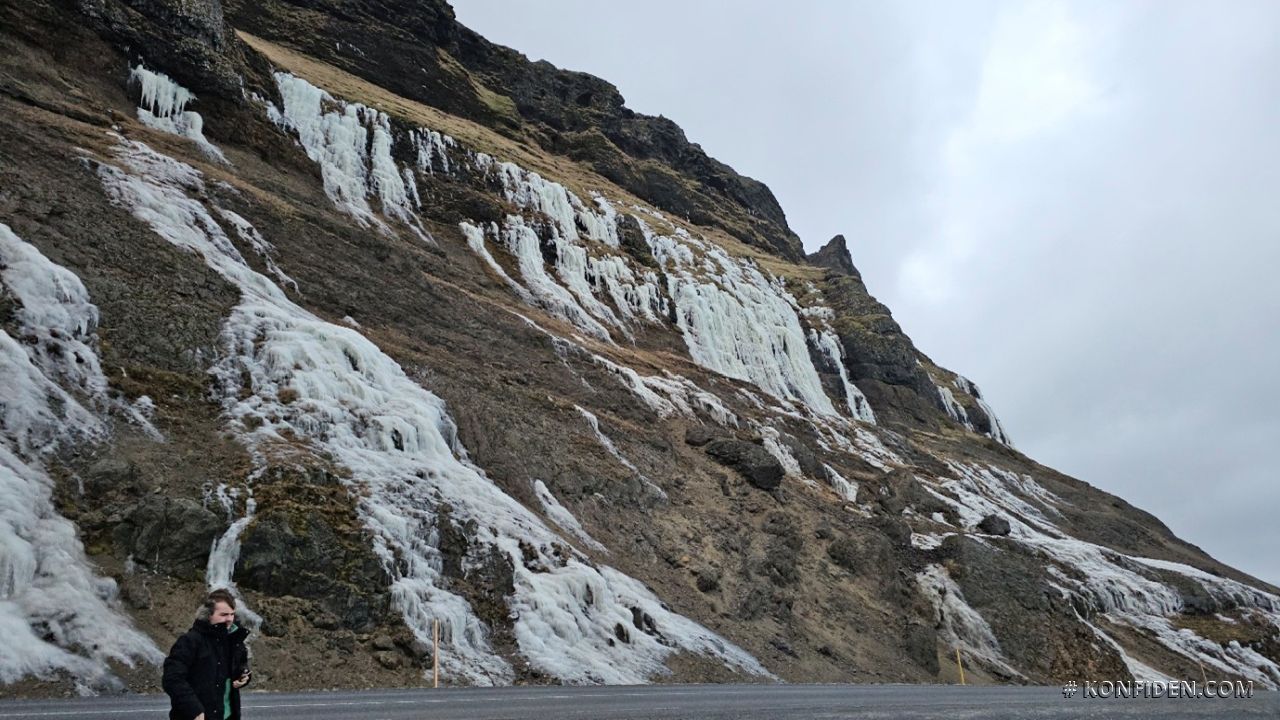
Along one of its roads, ísfoss (ice falls) were seen. They are formed when the water seeps down mountain slopes or cliffs, freezing in layers over time due to the cold temperatures in winter.
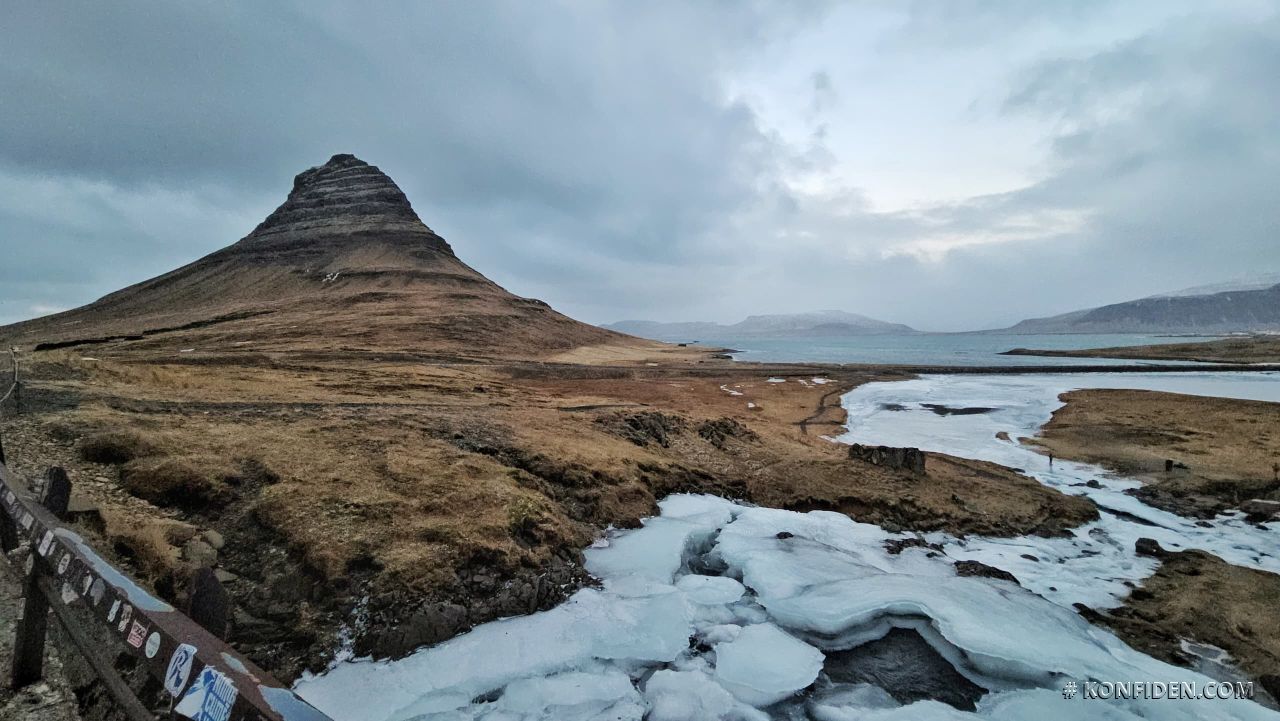
Kirkjufell and Kirkjufellsfoss were our last location on that trip. Mt. Kirkjufell is one of Iceland’s most photographed mountains in Iceland. Alongside is the nearby Kirkjufellsfoss waterfall.
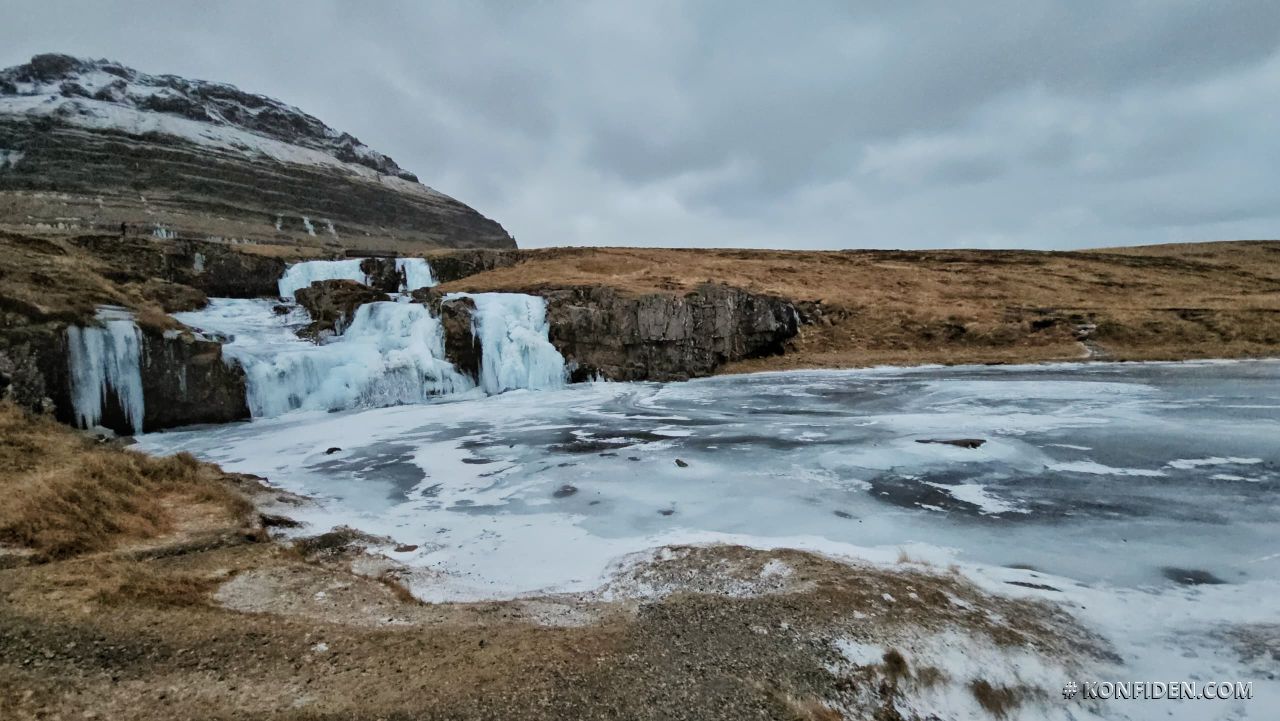
Frozen Kirkjufellsfoss waterfall.
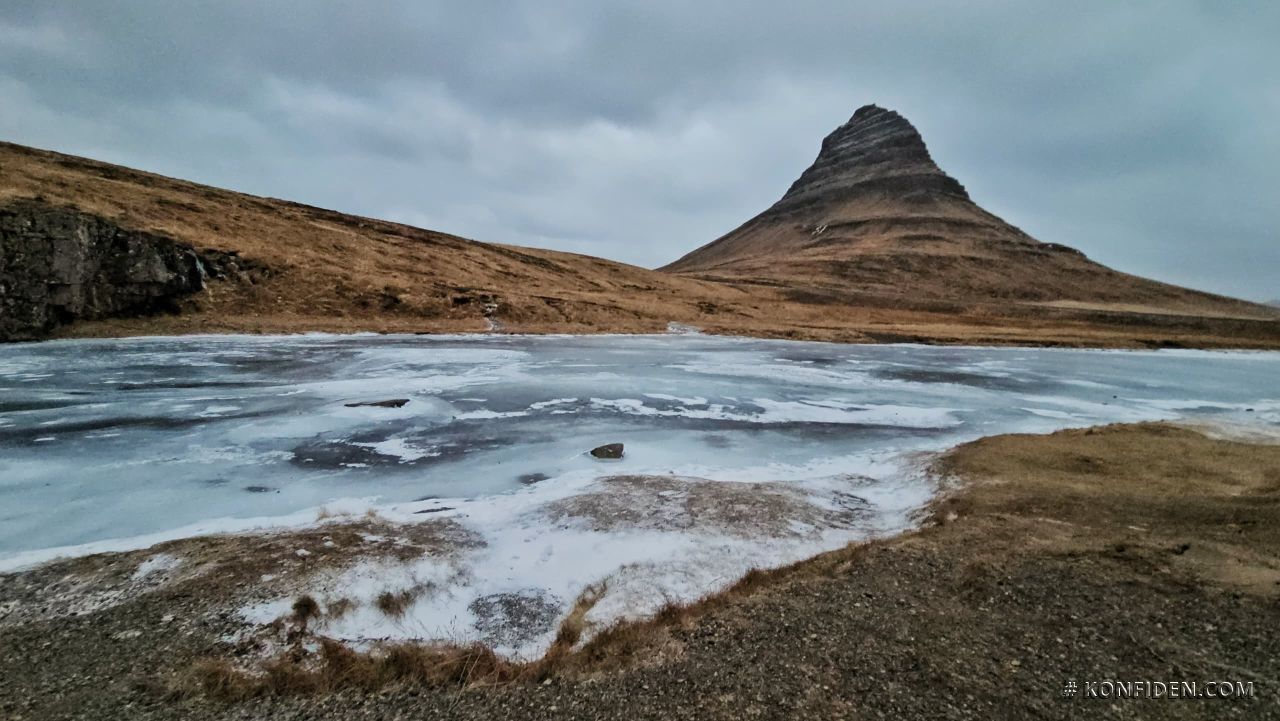
Mt. Kirkjufell with nonflowing river.
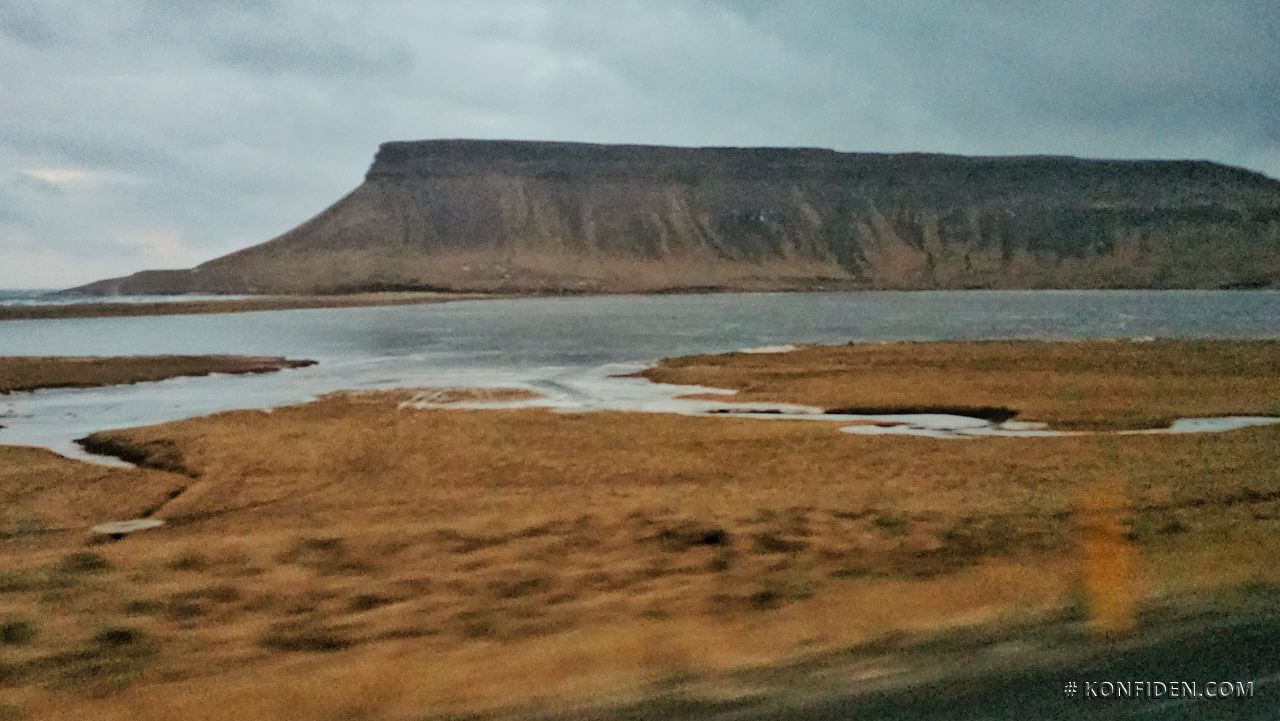
Mt. Kirkjufell at different angle, seen earlier from the moving bus.
Day 7 – South Island visit and repeat The Northen Lights Tour at night.
The last 24 hours of my time in Iceland had begun. I was headed to the southern part of the island. Once again, I found myself waiting at Bus Stop #5 at 7:50 a.m., hoping not to endure another long wait in the freezing temperatures.
When the sun finally began to shine, our bus journey unfolded with stunning views of snow-covered mountains, vast glaciers, and endless empty fields. Yet, somehow, my last day’s experience was slightly overshadowed by some “sweet scenes” from the gay couple sitting in the front seat. Hishh geli ehhh!!!
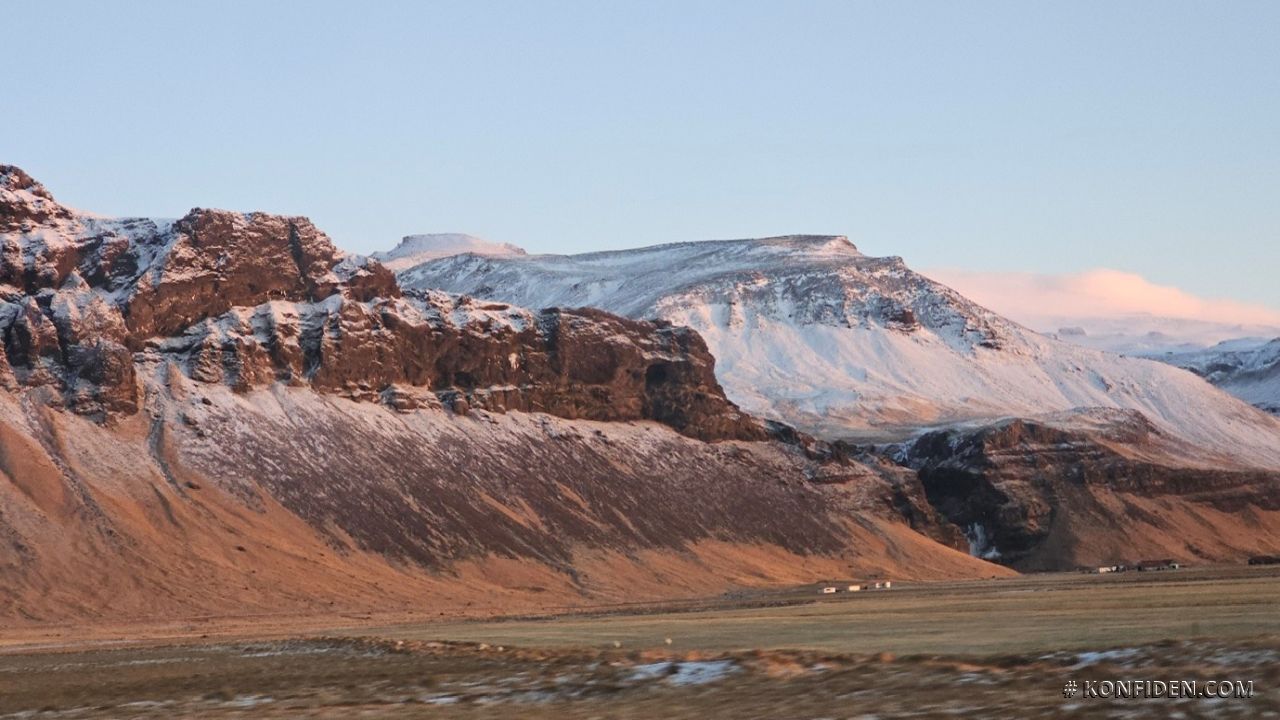
Some view along the way.
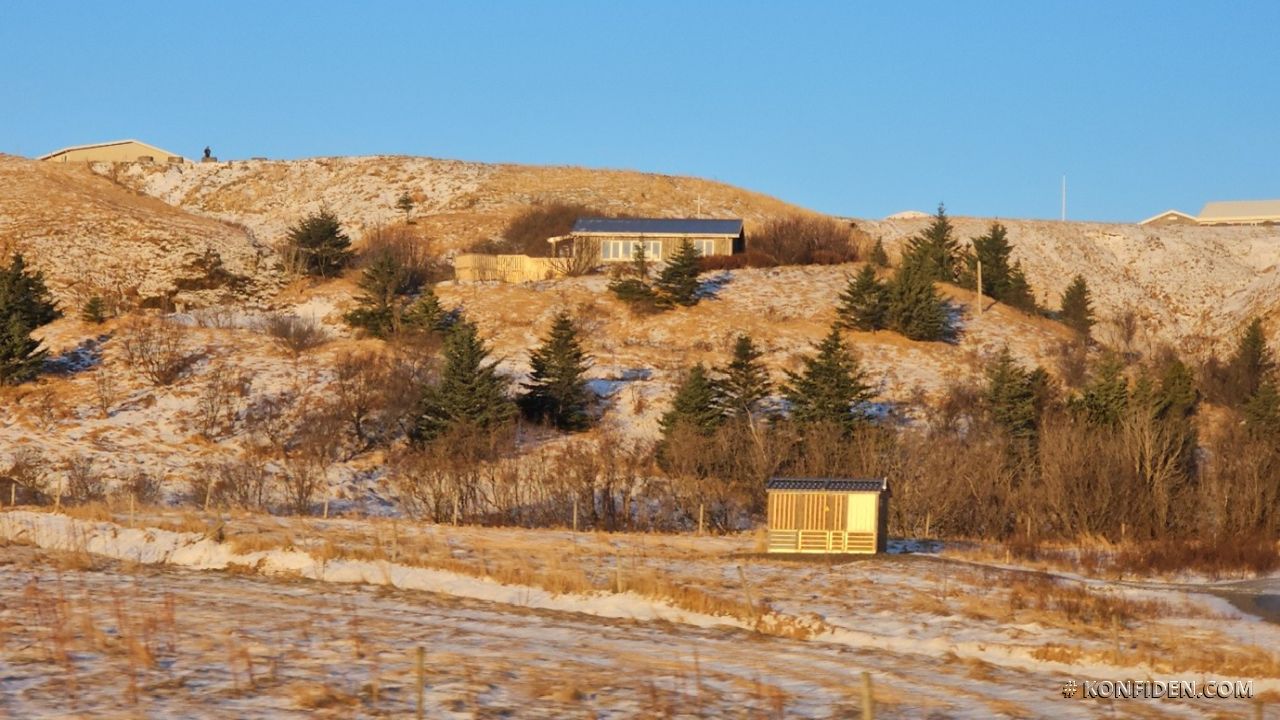
The evergreen pine trees among the deciduous dried ones.
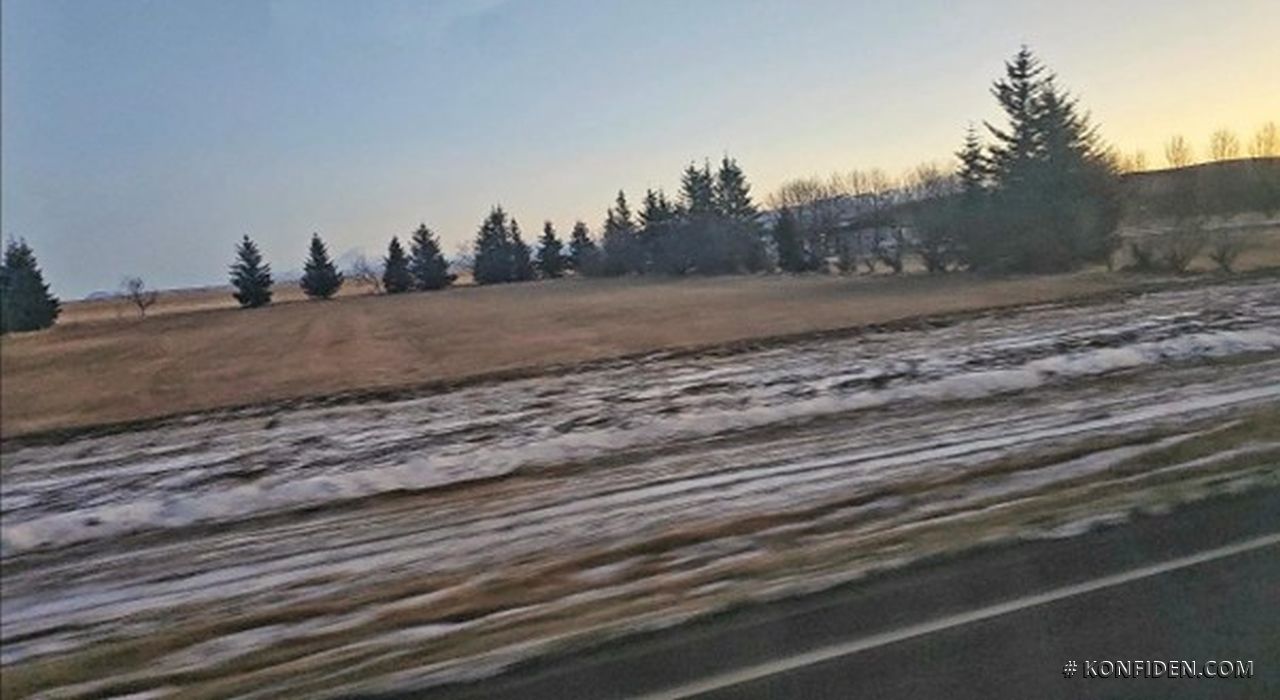
More green trees. Rare finding but no time for a selfie with the trees.
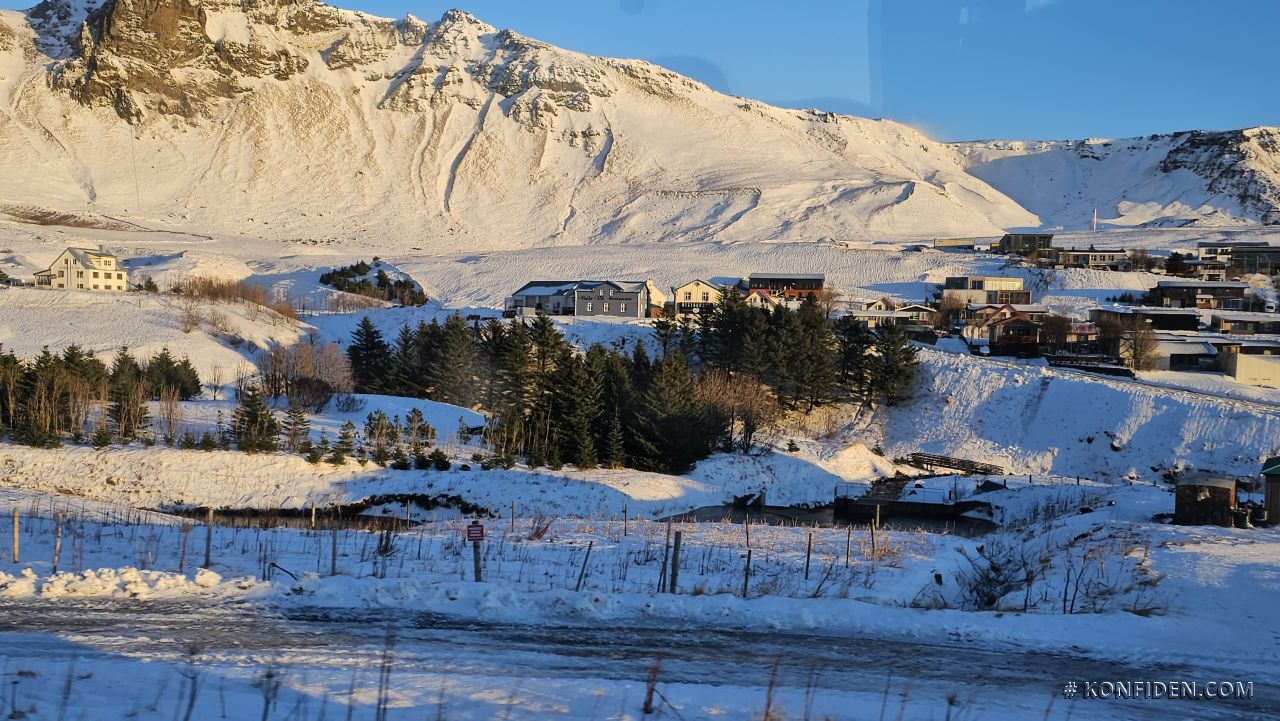
Again, trees… and houses too… and snow.
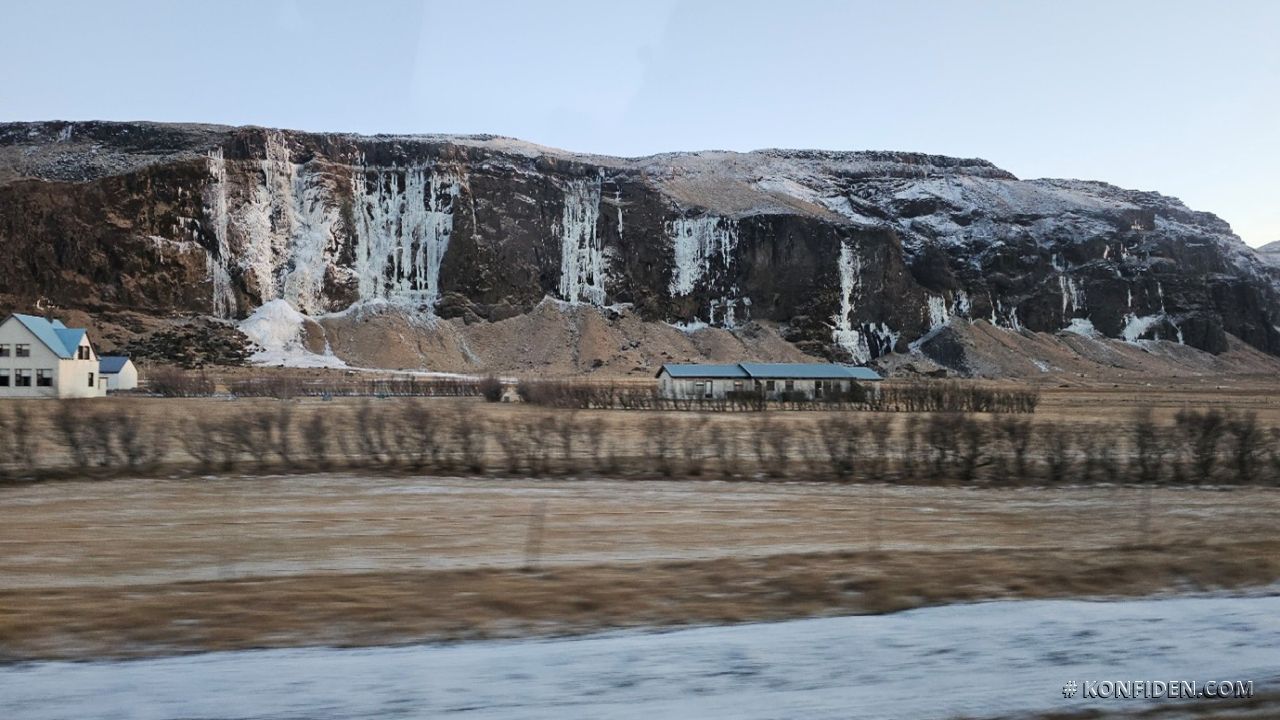
More ísfoss.

Glacier up there.
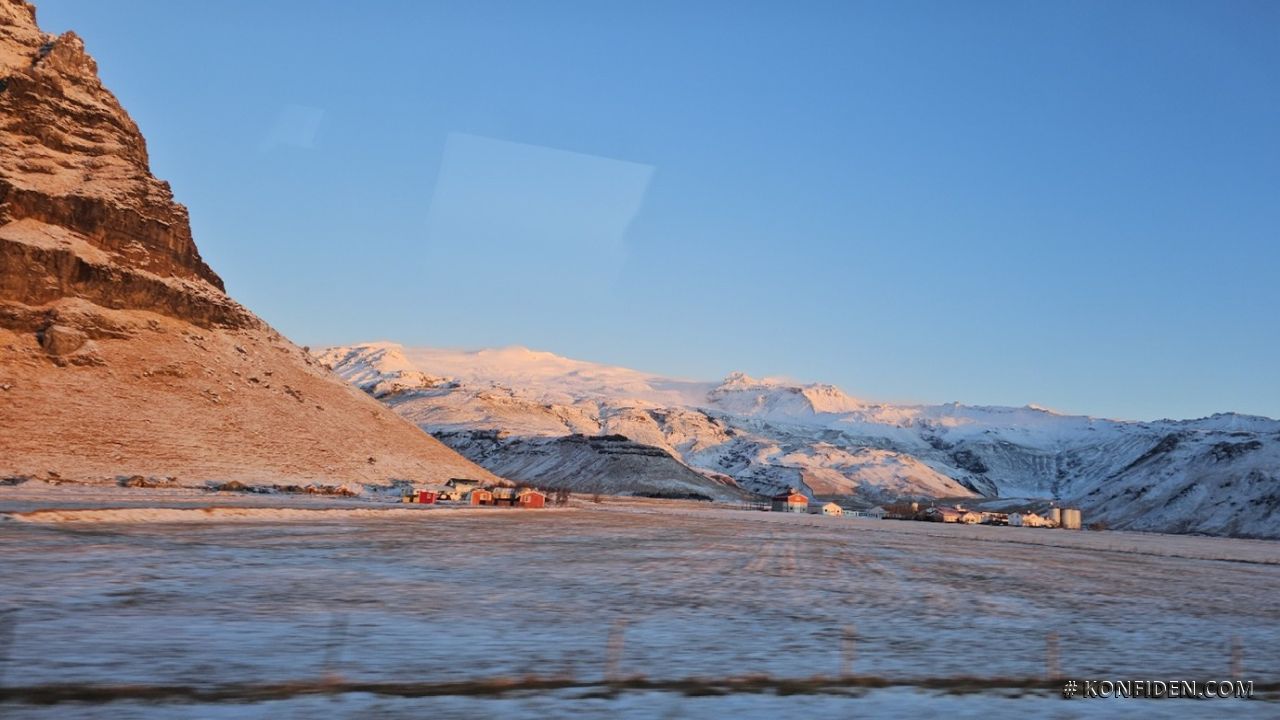
If Ramadan falls in December, the Muslim villagers would be fasting around 4-5 hours.
Location: Skógafoss Waterfall.
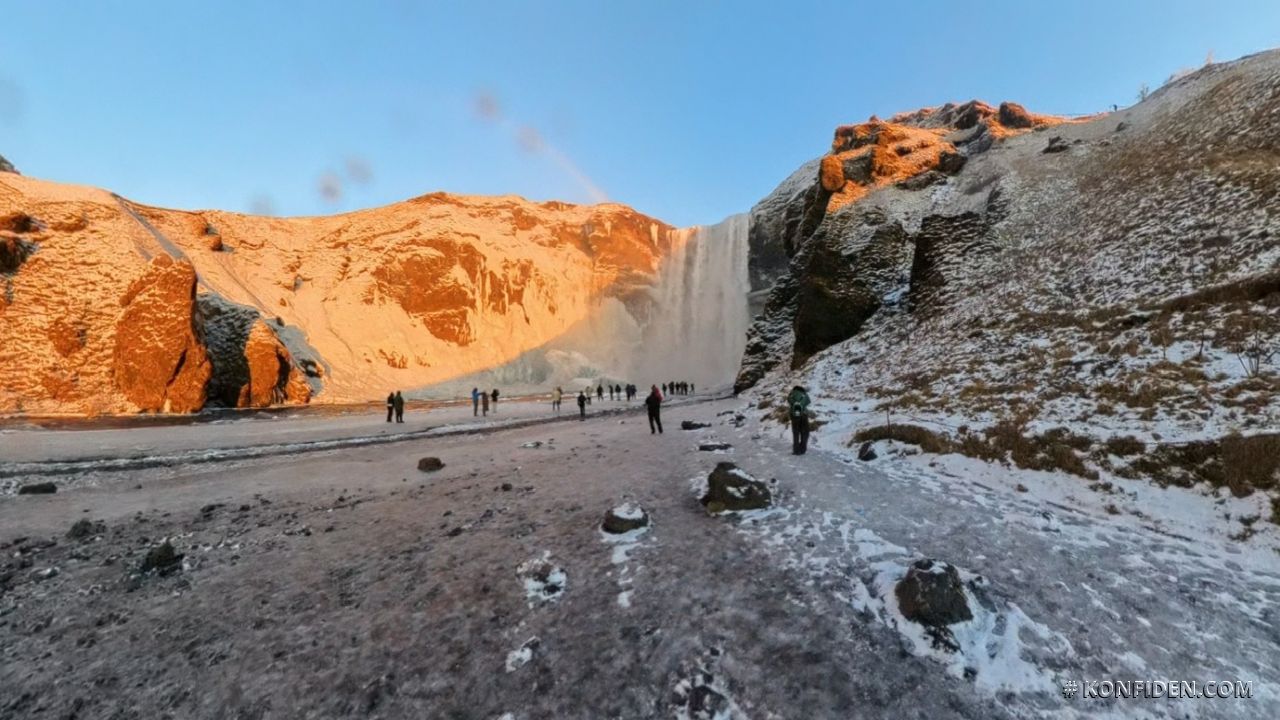
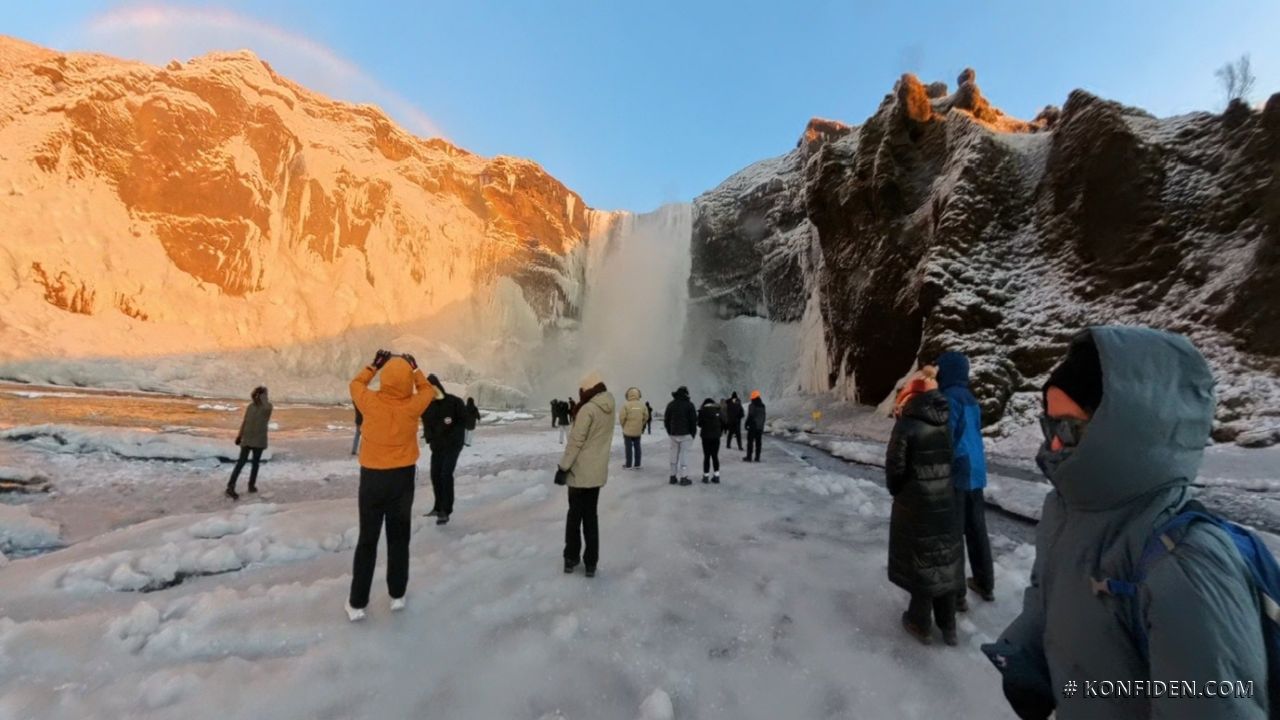
My Elsa moment.
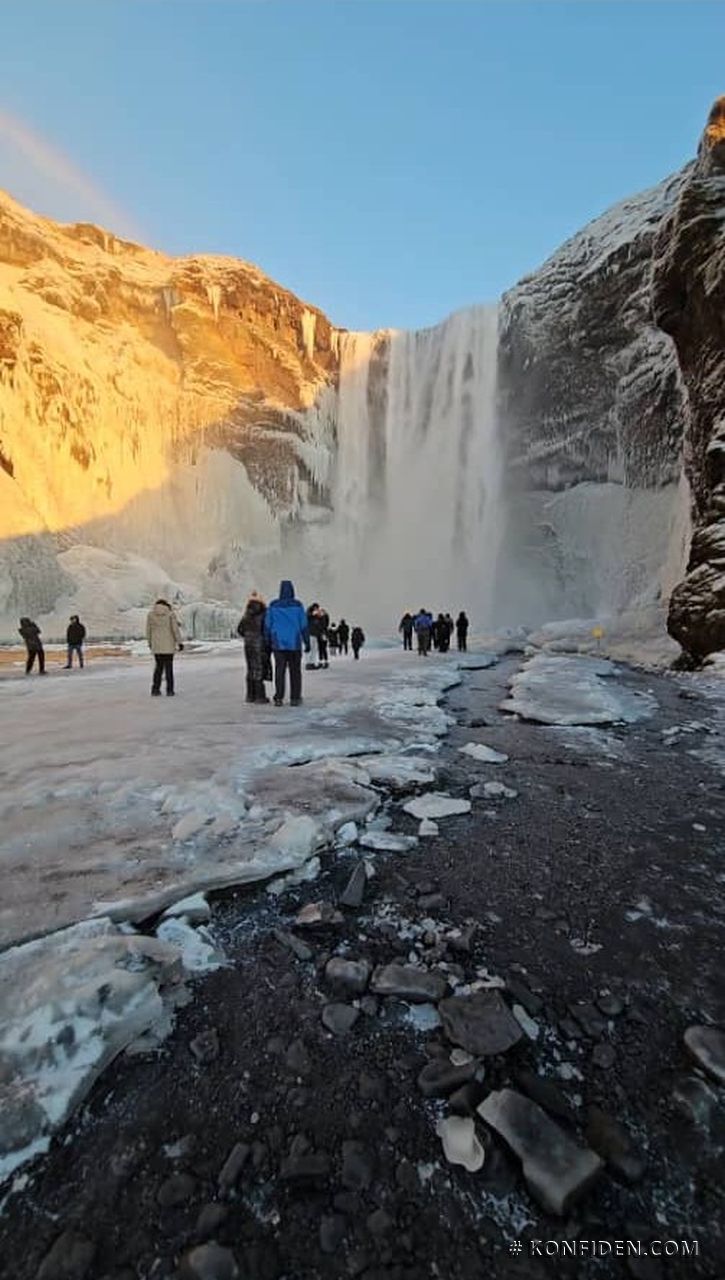

Do you notice a rainbow?
Location: Reynisfjara, Black Sand Beach.
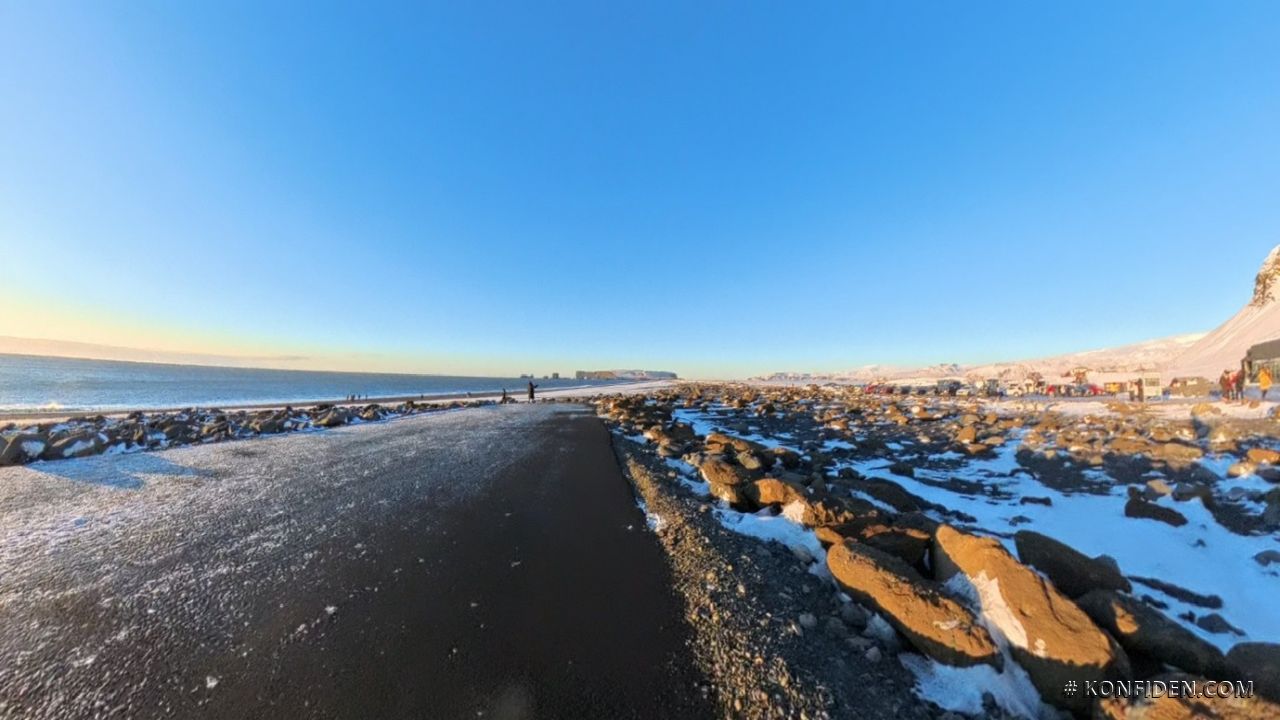
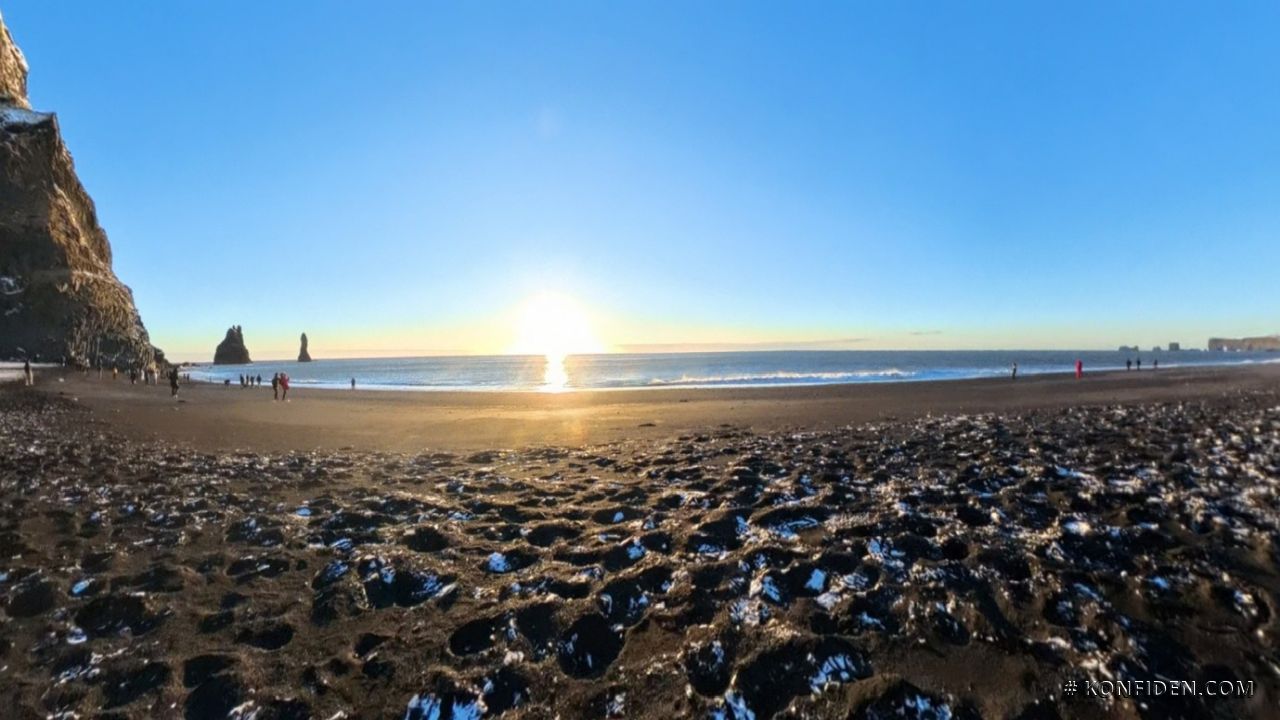
Panoramic stretched view of both ends.
The black sand is formed from volcanic basalt, created when lava cools rapidly when in contact with cold ocean water and shatters into small fragments.
Closer to the water, the sand consists of smooth, fine grains of black volcanic material, like regular beach sand but jet black.
Further inland, especially near the cliffs, the beach transitions to small black pebbles and larger stones.
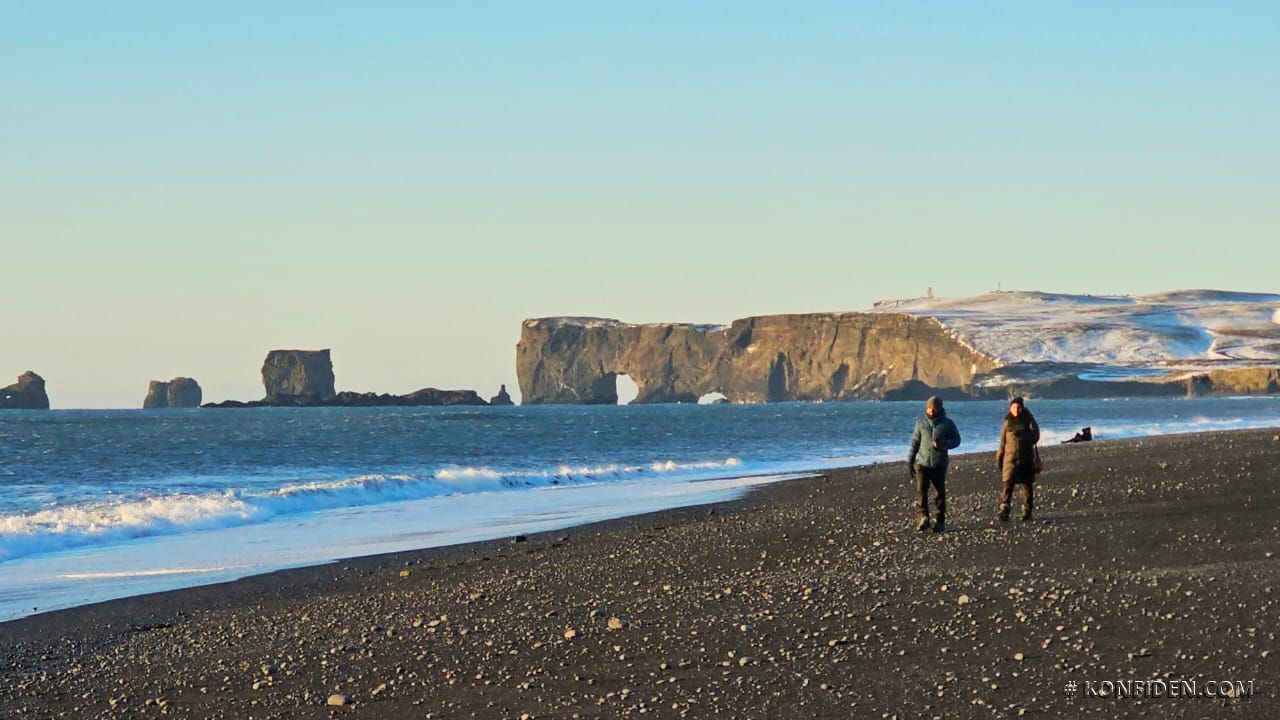
Dyrhólaey, the rock arch with its small peninsula, and the crashing waves.
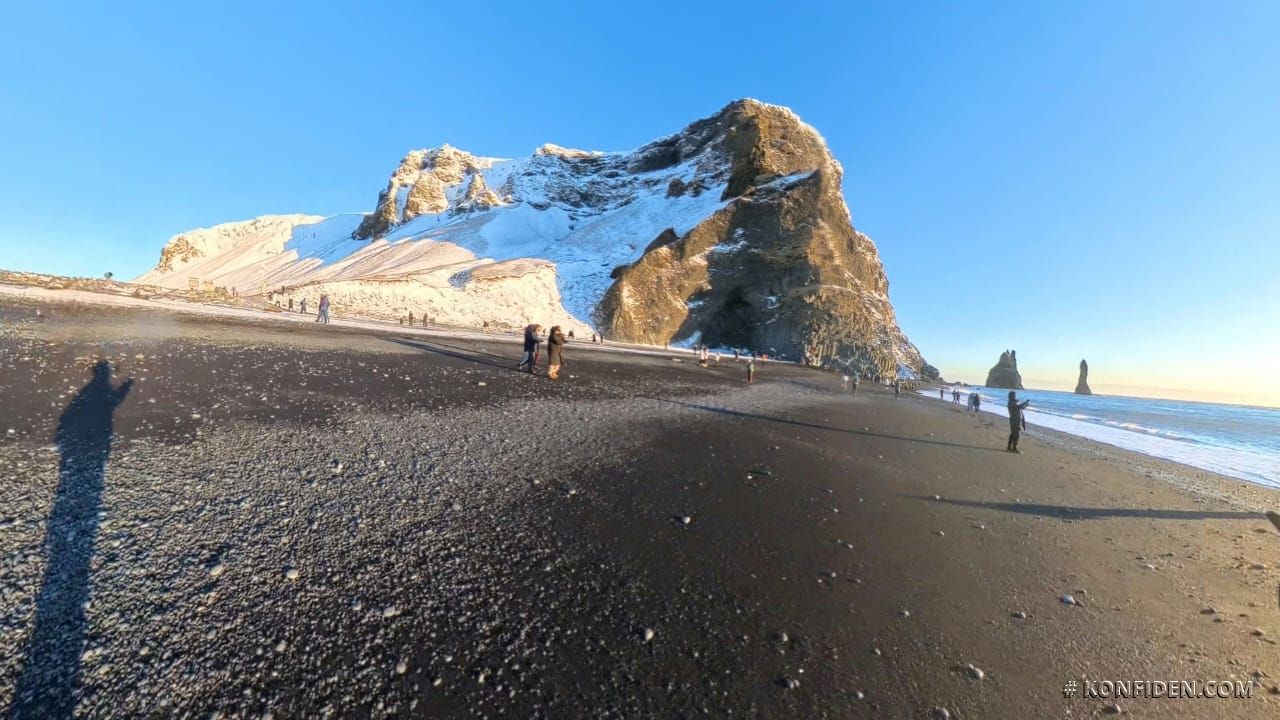
My version of Gerua.
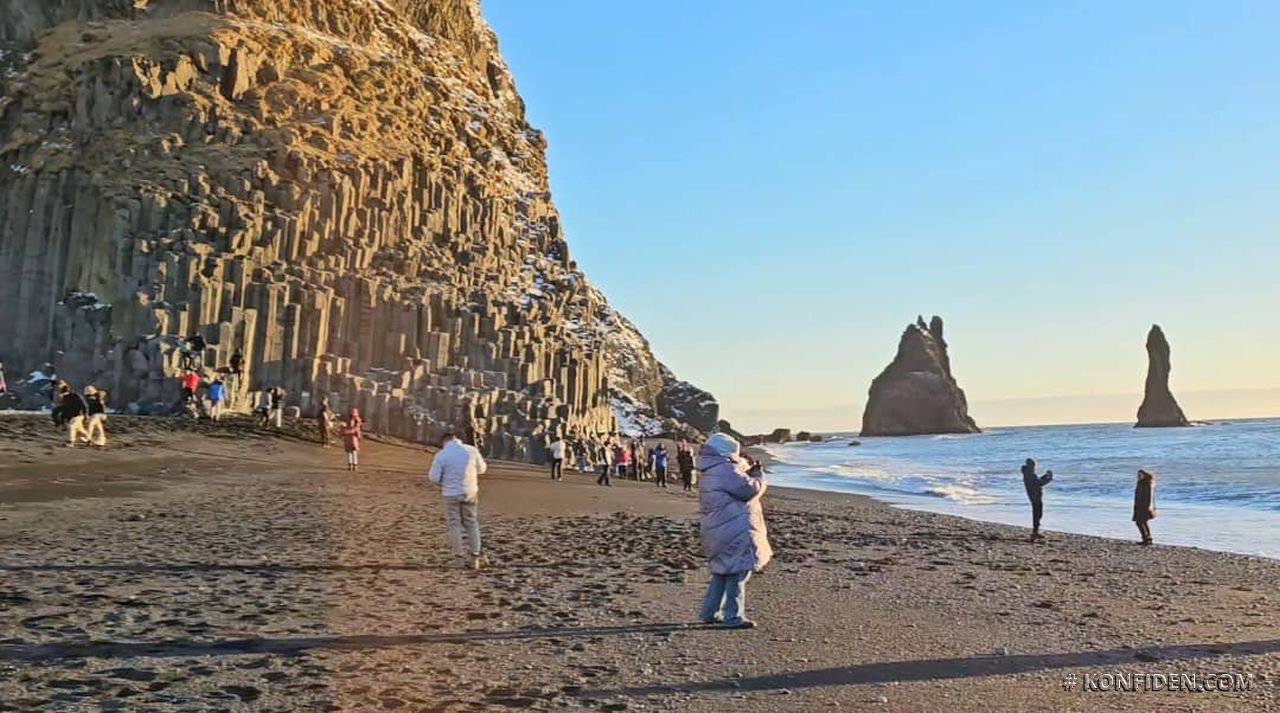
Reynisdrangar sea stacks, the two jagged rock pillars that are rising out of the ocean. The legend says they were once trolls who were trying to pull ships ashore but were turned to stone by the rising sun. Kesian…
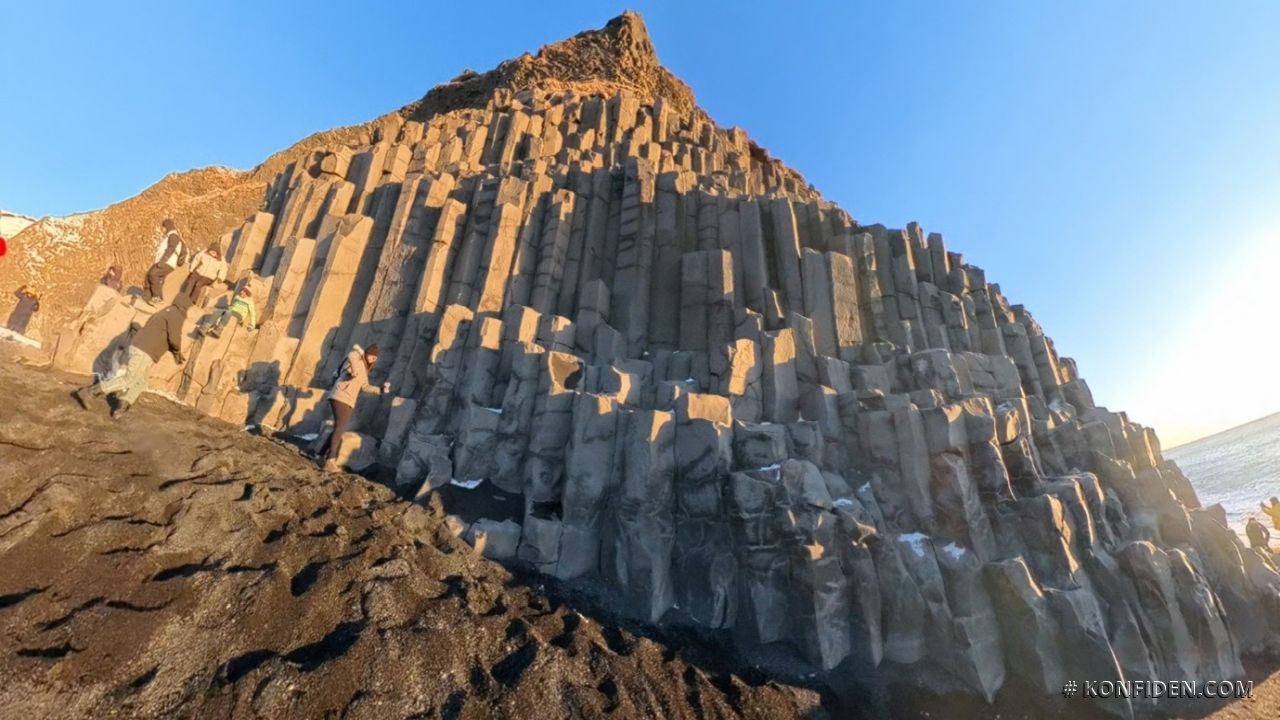
Full, closed up photo of the cliffs (but skewed, thanks Insta360).
Hexagonal basalt column cliffs, resembling a giant’s staircase. There are magnificent formations created by cooling lava contracting into geometric shapes over time. If you have been to the Giant’s Causeway in Northern Ireland, you’ll notice the similarity.
However, the columns at the Giant’s Causeway were formed many millions of years earlier, and you can easily walk on them. In contrast, the basalt cliffs at this beach are much taller, vertically like a wall.
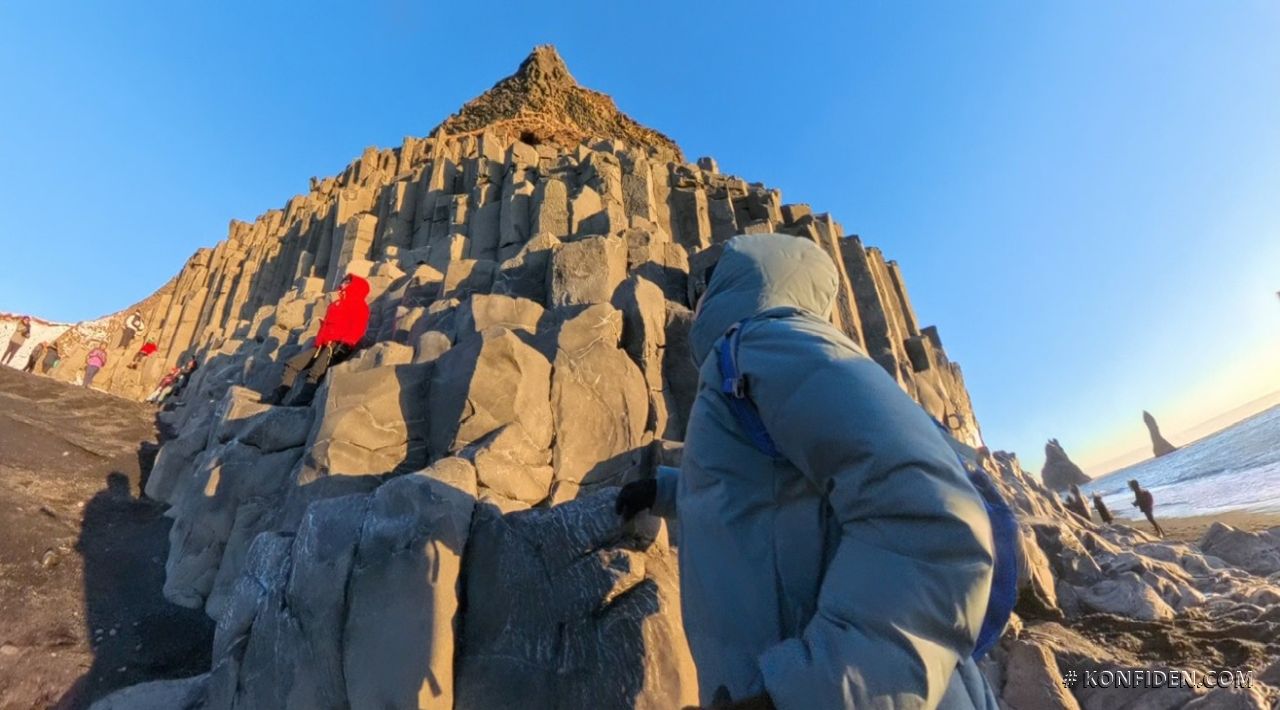
Absorbing its force.
The next location was Sólheimajökull, one of Iceland’s most accessible glaciers, an outlet glacier of Mýrdalsjökull, Iceland’s fourth-largest ice cap.
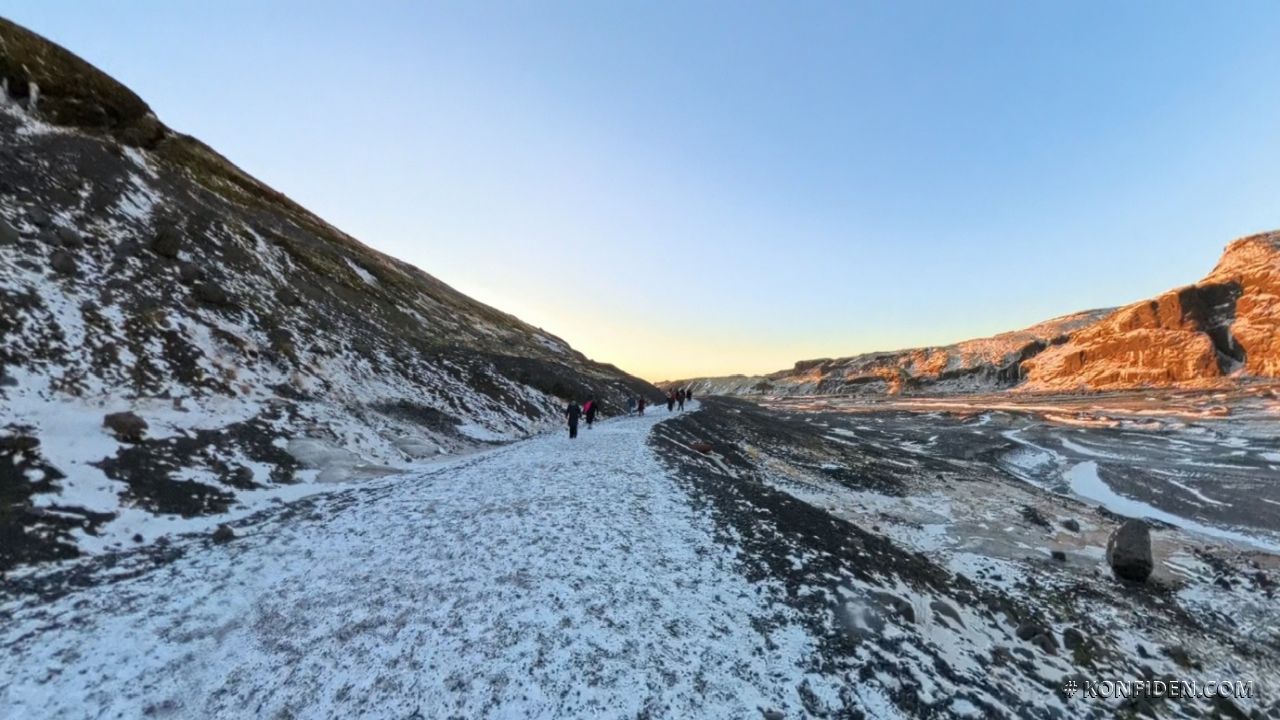
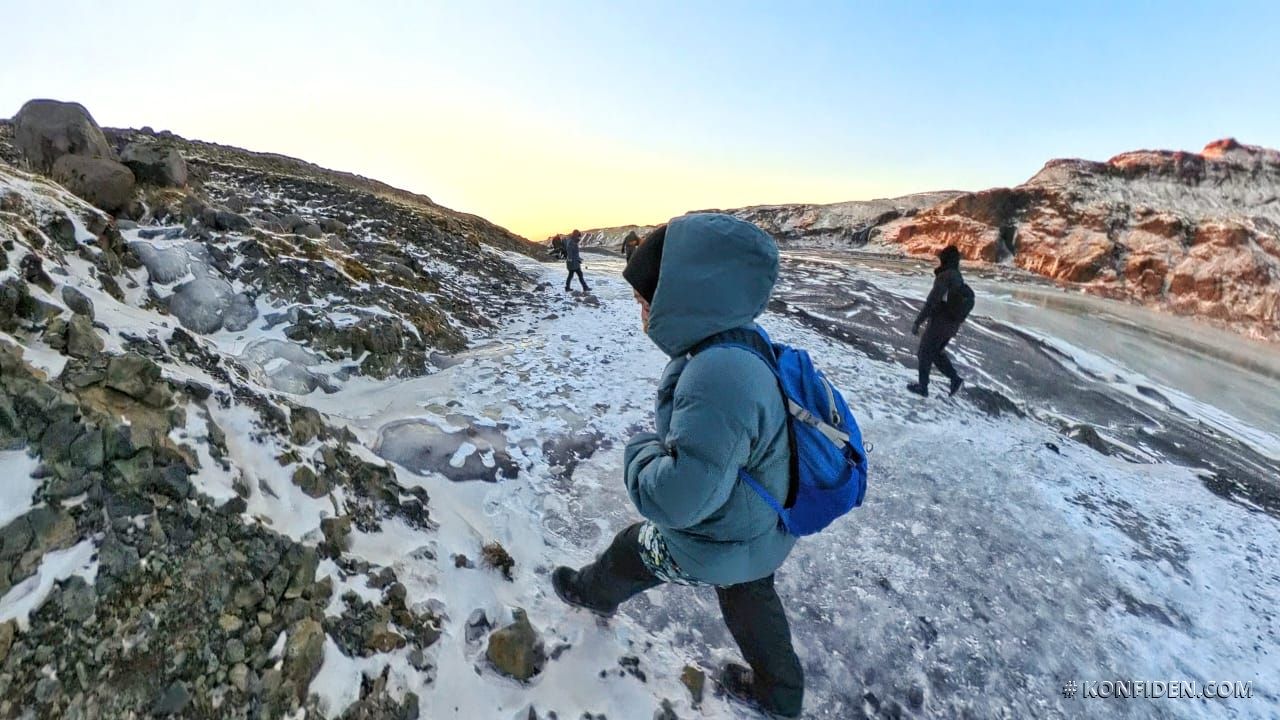
Icy wilderness. Really need to be carefull, not to slip.
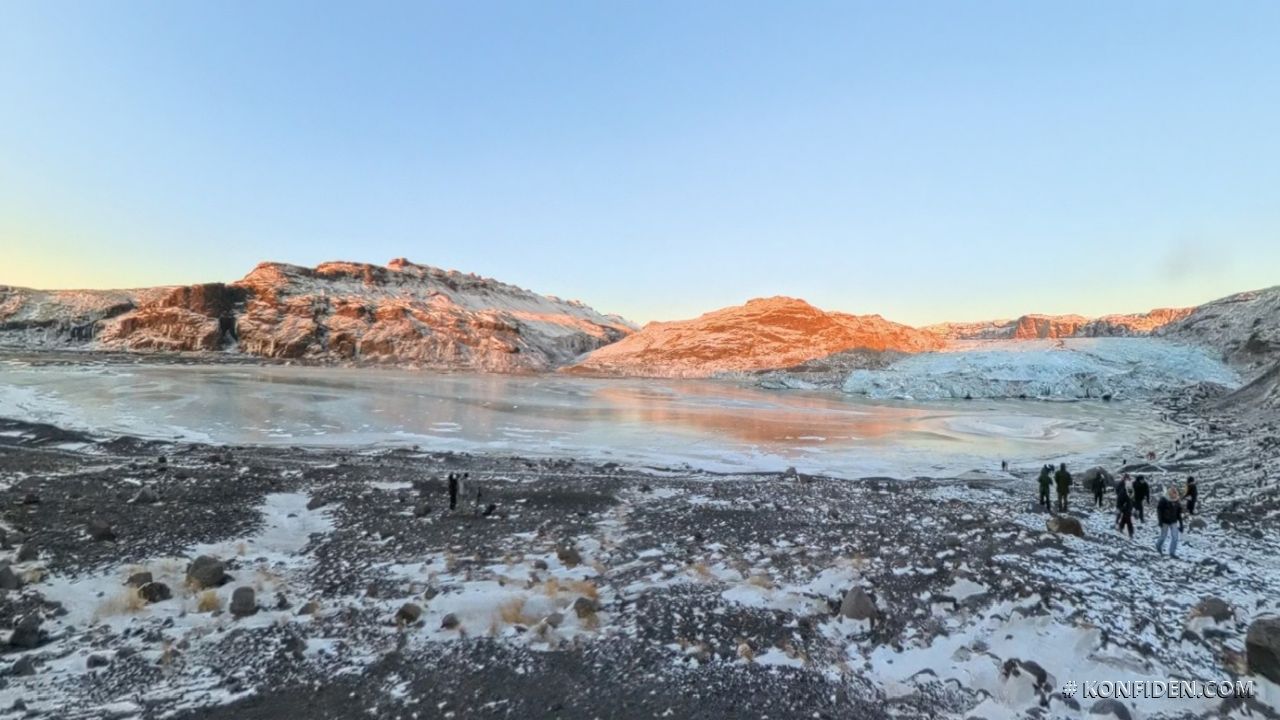
Panoramic stretched view.
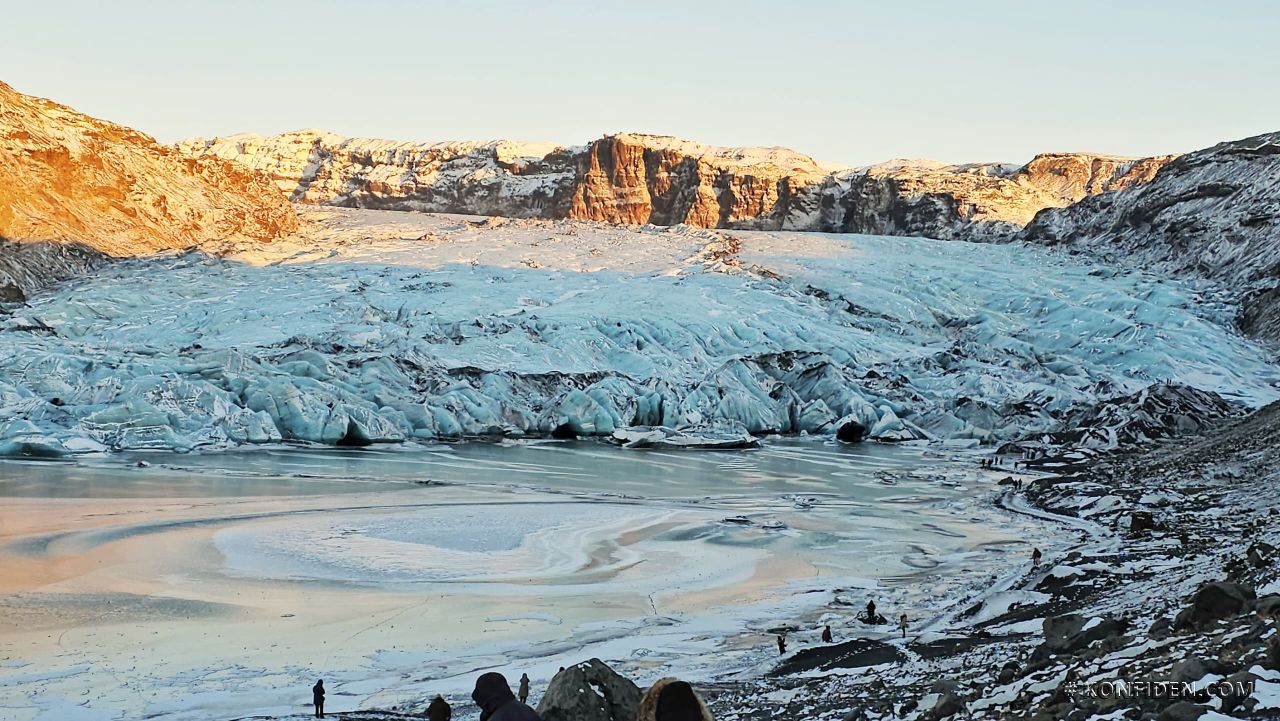
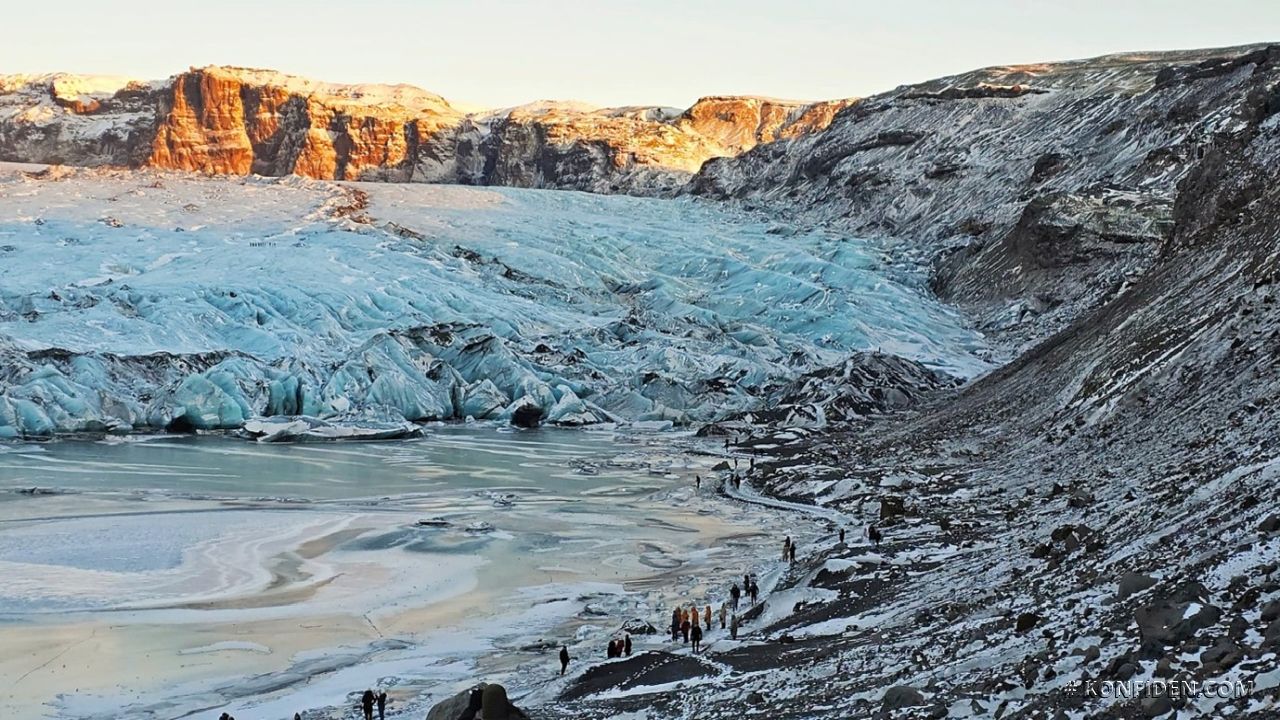
The glacier is a mix of white ice, blue ice, and black volcanic ash, creating spectacular contrasts in the ice formations.
Over the past years, this glacier too, has lost significant mass due to the impact of global warming.
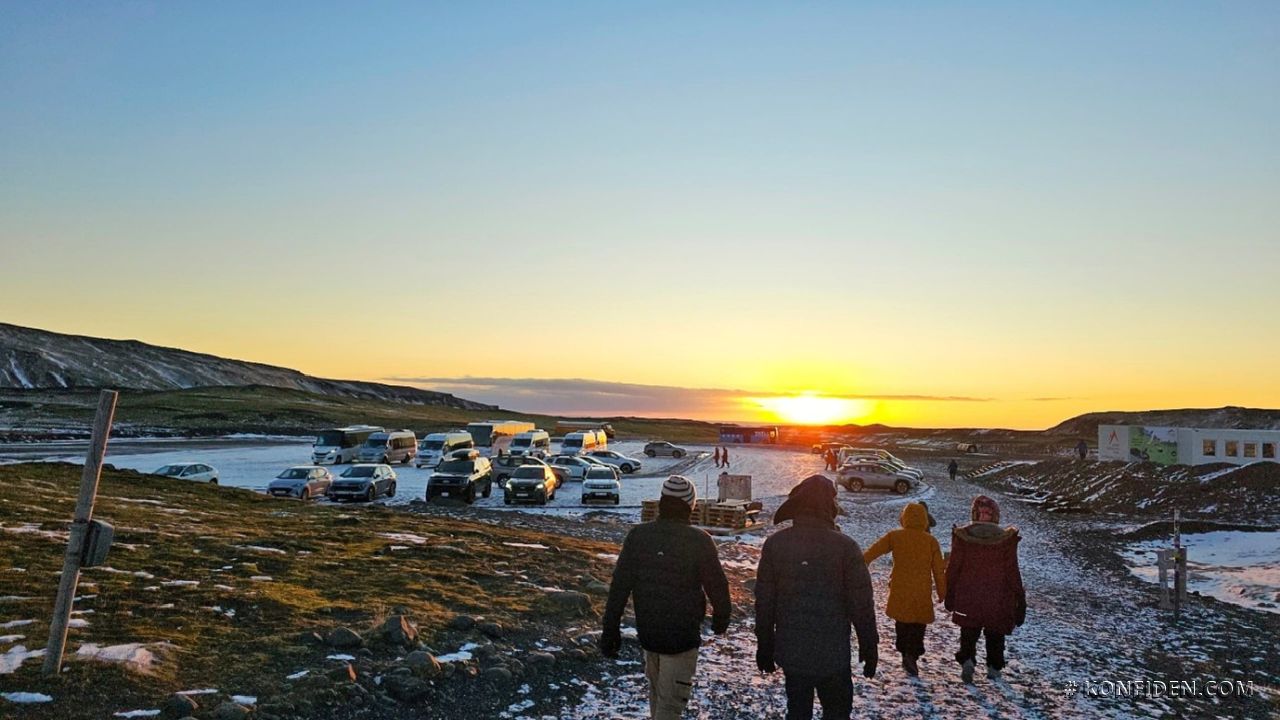
The sun was setting.
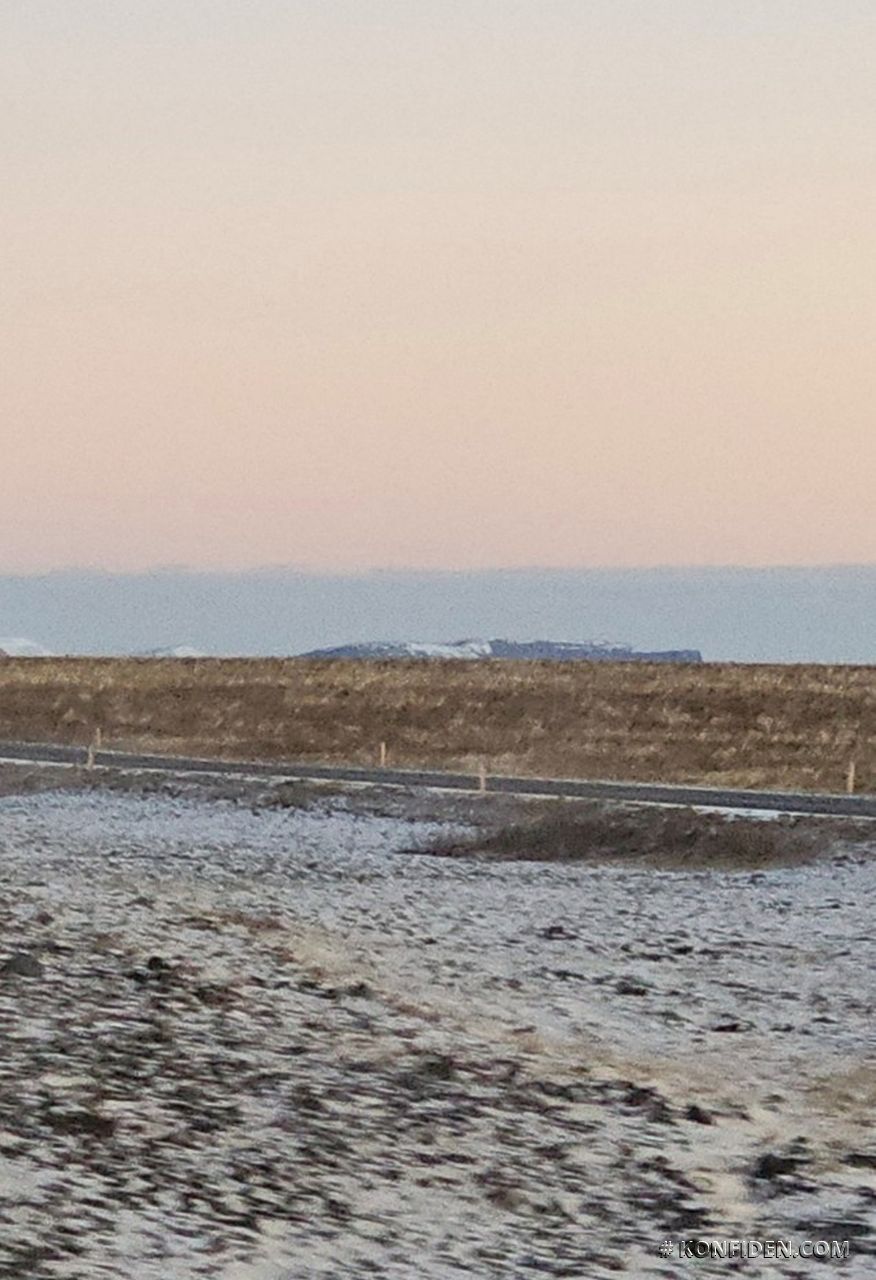
Trying to zoom in the plane wreck (can you locate it?) featured in Gerua which we didn’t stop. Such a bummer…
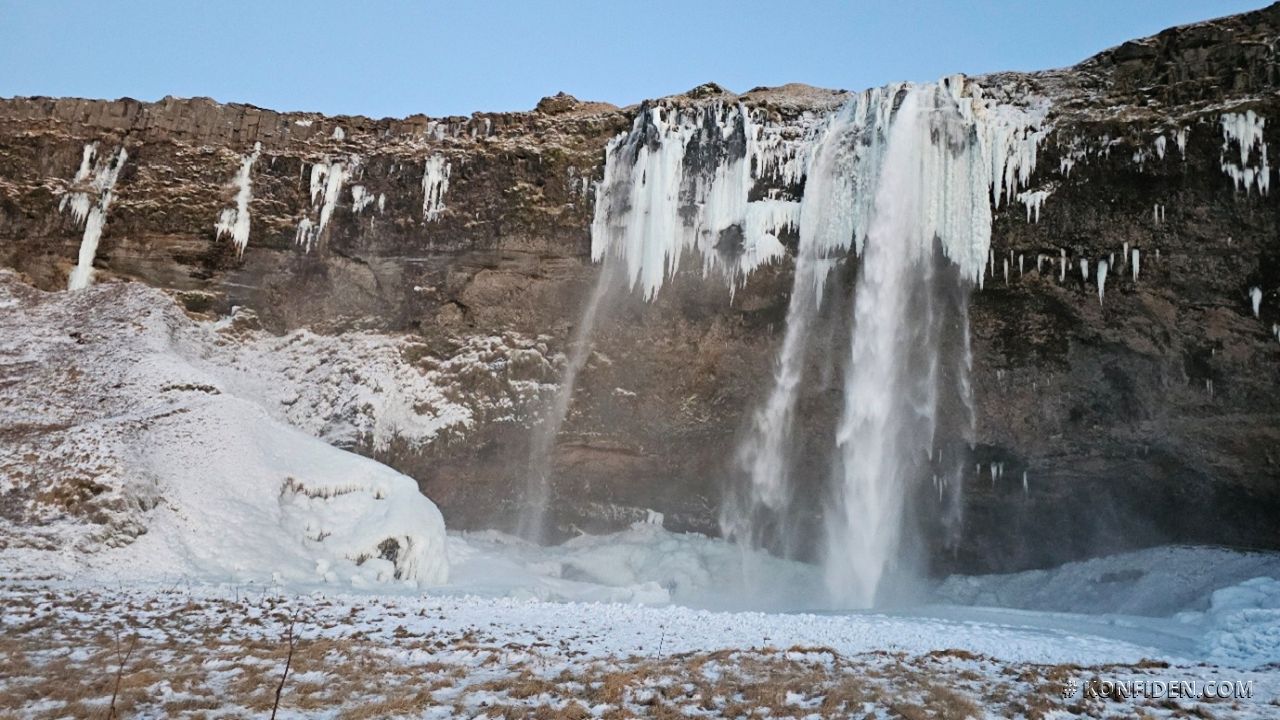
Another waterfall. The last stop for that trip. Nothing much to describe except: chilling cold, almost dark with frozen mist splashing away.
We arrived in the city at about 7:00 p.m. I had booked a repeat Northern Lights tour for that night at 9:30 p.m., so there was plenty of time to settle in and get ready.
At almost 9 p.m., I looked out of my room window and noticed people lining up to face the dark sea. There was a streak of faint green on the sky! Subhanallah!!
The aurora decided to make an appearance through my window on my very last night in Iceland. It wasn’t like the greyish, cloud-like aurora I had seen a few days earlier. I tried to record the magical moment, but sadly, my phone camera refused to cooperate and deliver well. I quickly got ready and joined the others.
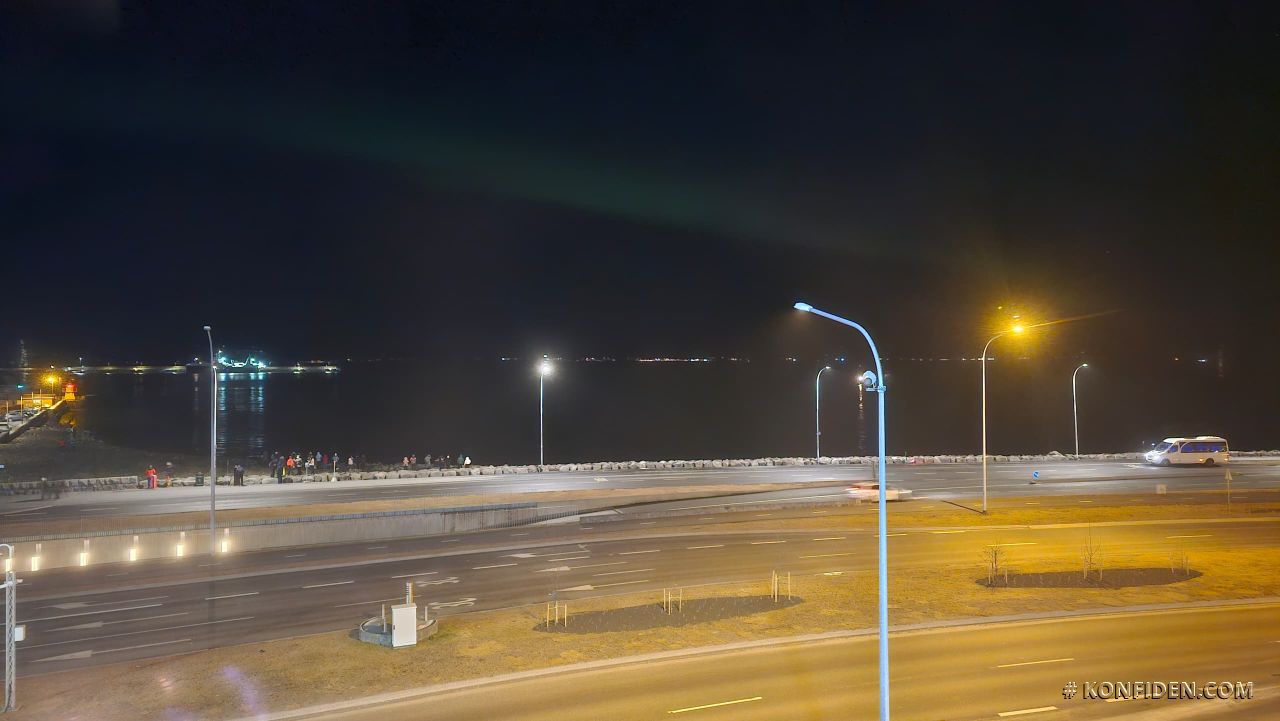
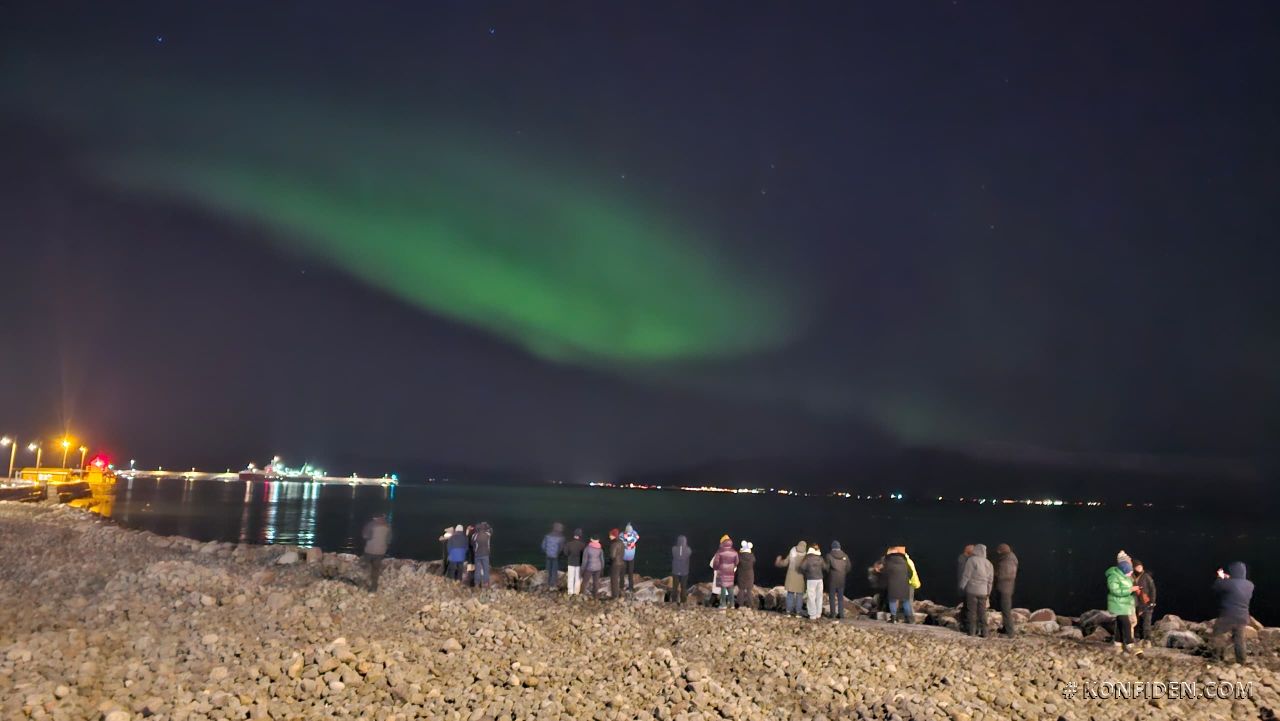
The lights looked even better outside. We enjoyed the lights while waiting for the bus to arrive.
Soon, the bus took us to an even darker location, far from the city lights.
After about 30 minutes, the bus parked in a very dark place. It was freezing, about -14°C, maybe -15°C, or even -16°C. Basically my freezer temperature at home, except that I was outside, in a crazily cold environment for far longer than I could ever imagine.
I tried to capture the moment with my phone, holding it up while my fingers screamed to stay warm in my pockets. My cheap tripod (Shopee find too) had suffered damage from sea salt during a diving trip two and a half months ago and was now only partially functional.
Meanwhile, the star-gazing mode on Insta360 produced nothing short of disastrous results. How tragic!
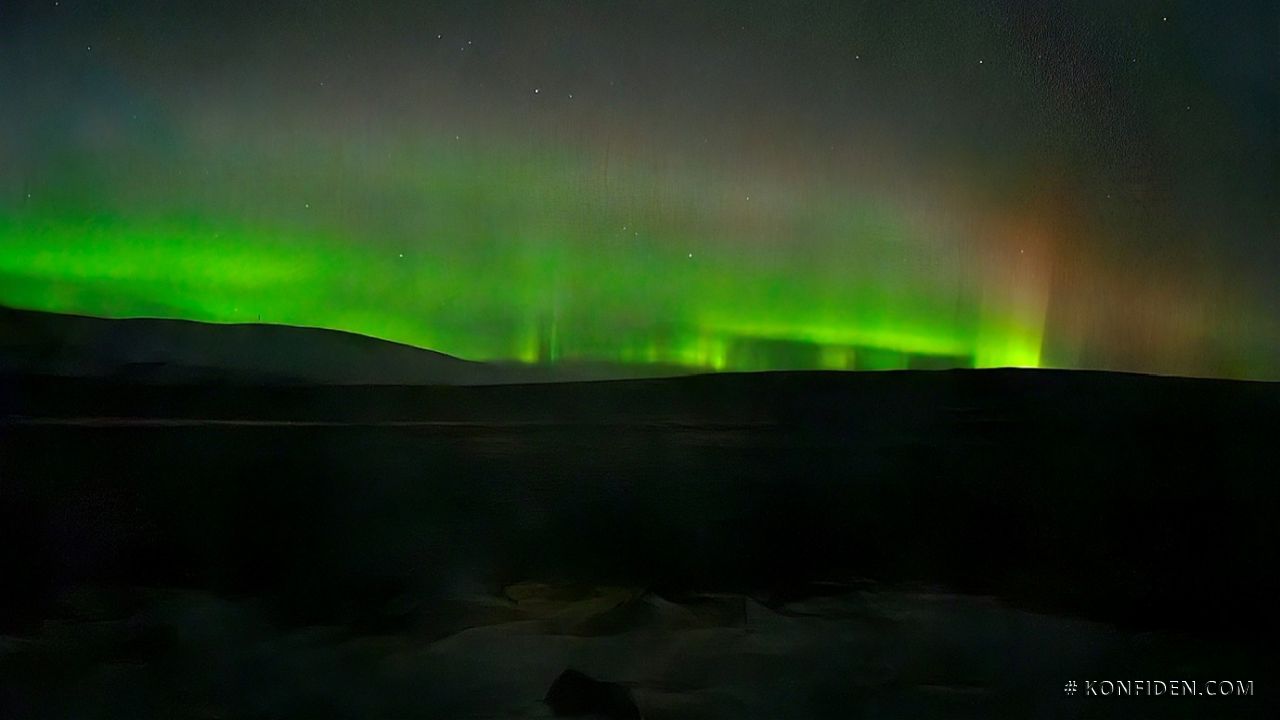
However, despite my fingers and toes likely already cyanosed in the deep, dark night, Alhamdulillah, I retrospectively discovered some amazingly captured moments of the Icelandic Northern Lights on my camera phone.
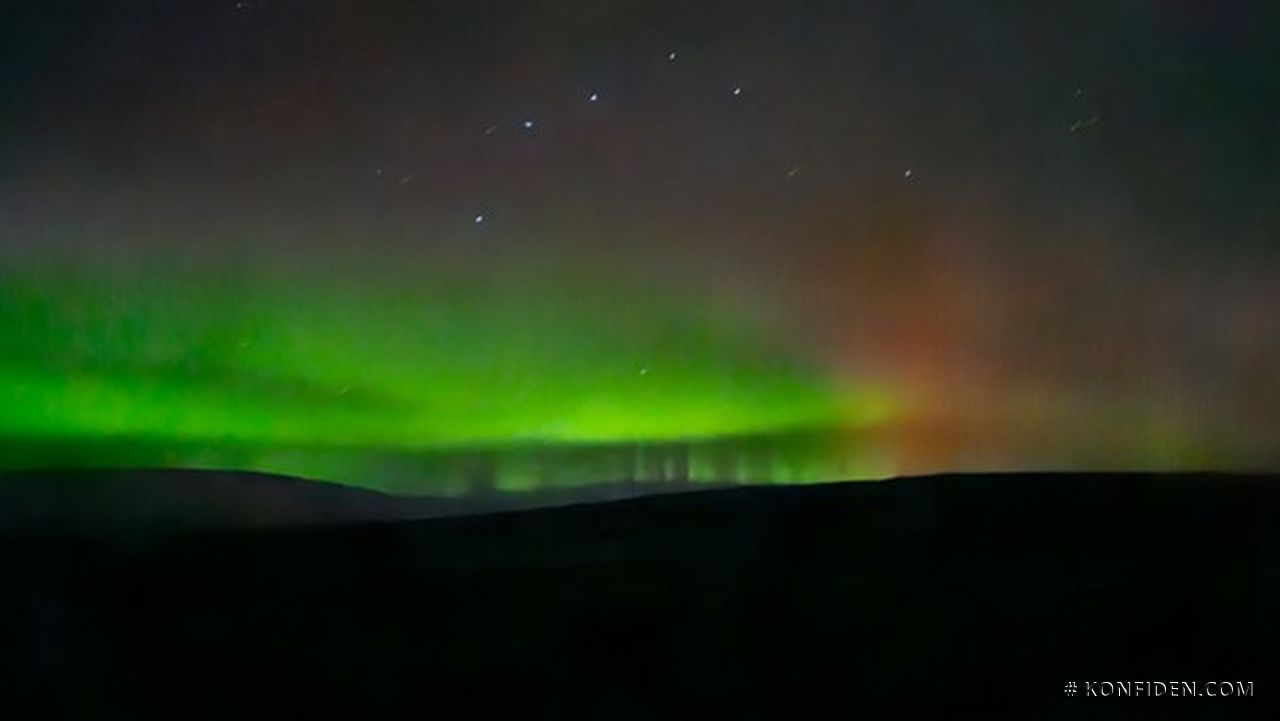
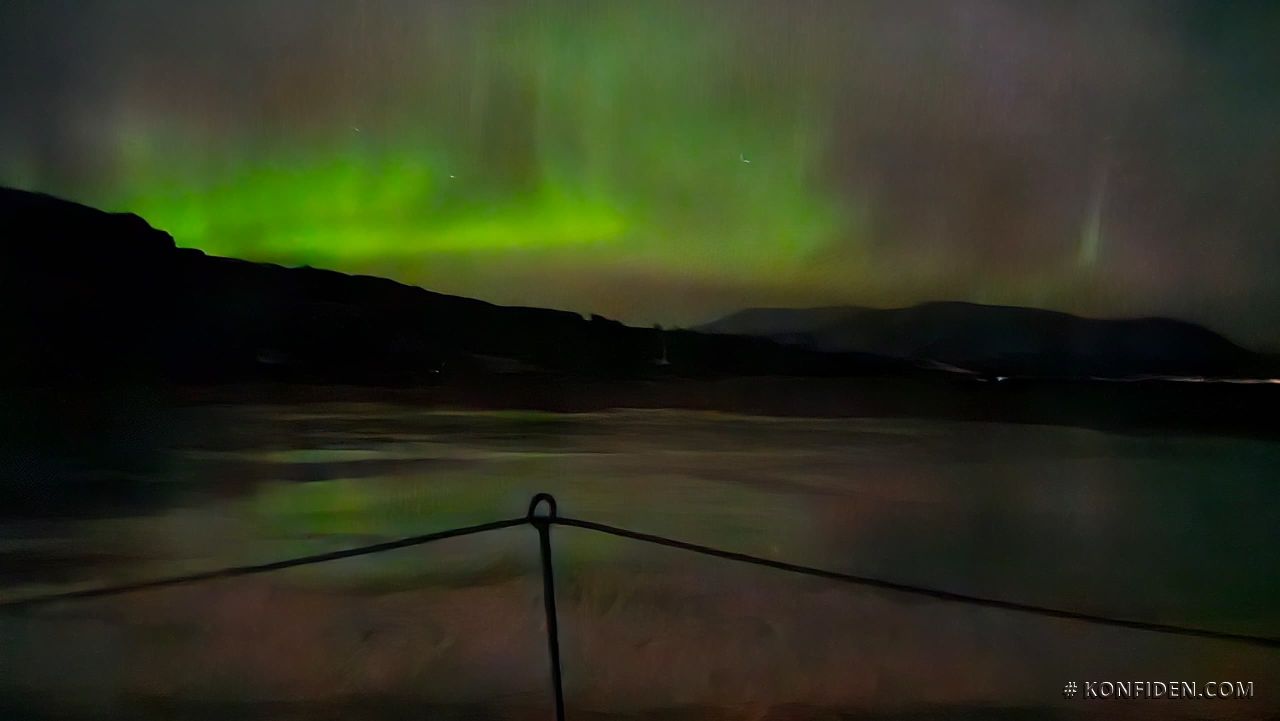
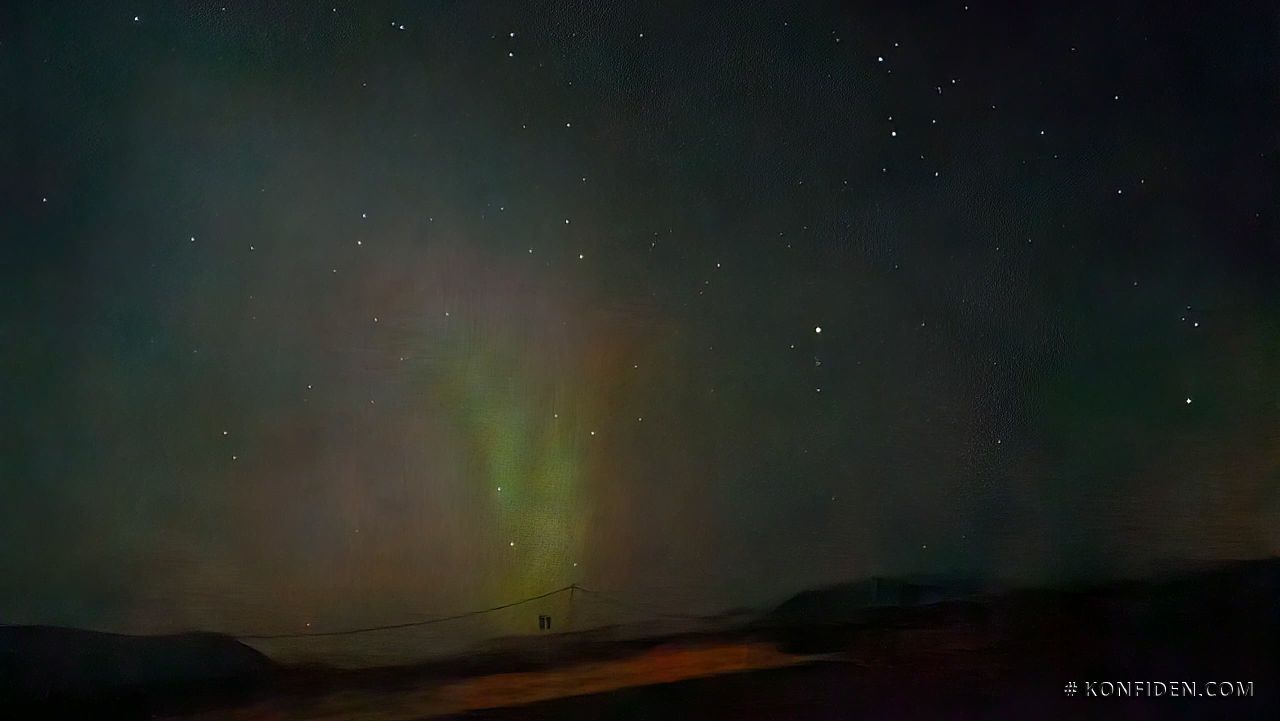
The lights were beginning to fade, signaling the end of the “show”. The guide mentioned that there was little chance of the aurora growing stronger, so we headed back to the city.
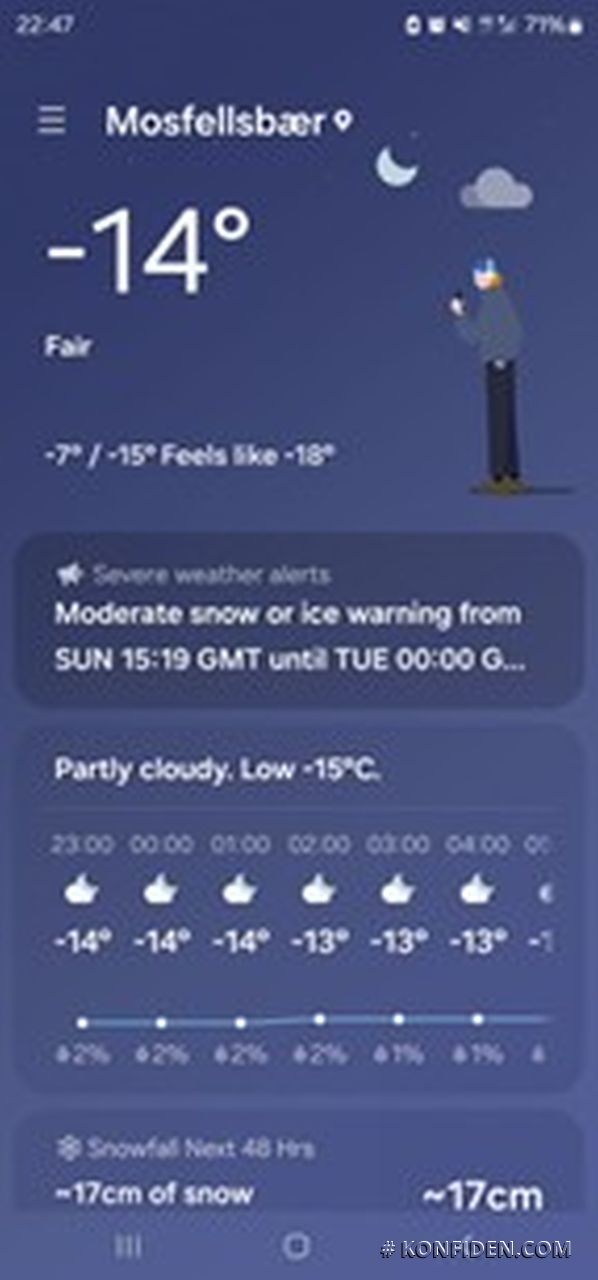
From my room, no more lights appeared. Eventually, I closed the curtain and ended my final night in Iceland.
But my journey isn’t over yet – join me in PART 4, where I’ll share the final leg of my travels back home, the must-see spots I discovered during a brief stopover, and a wrap-up of everything I experienced on this incredible trip.
